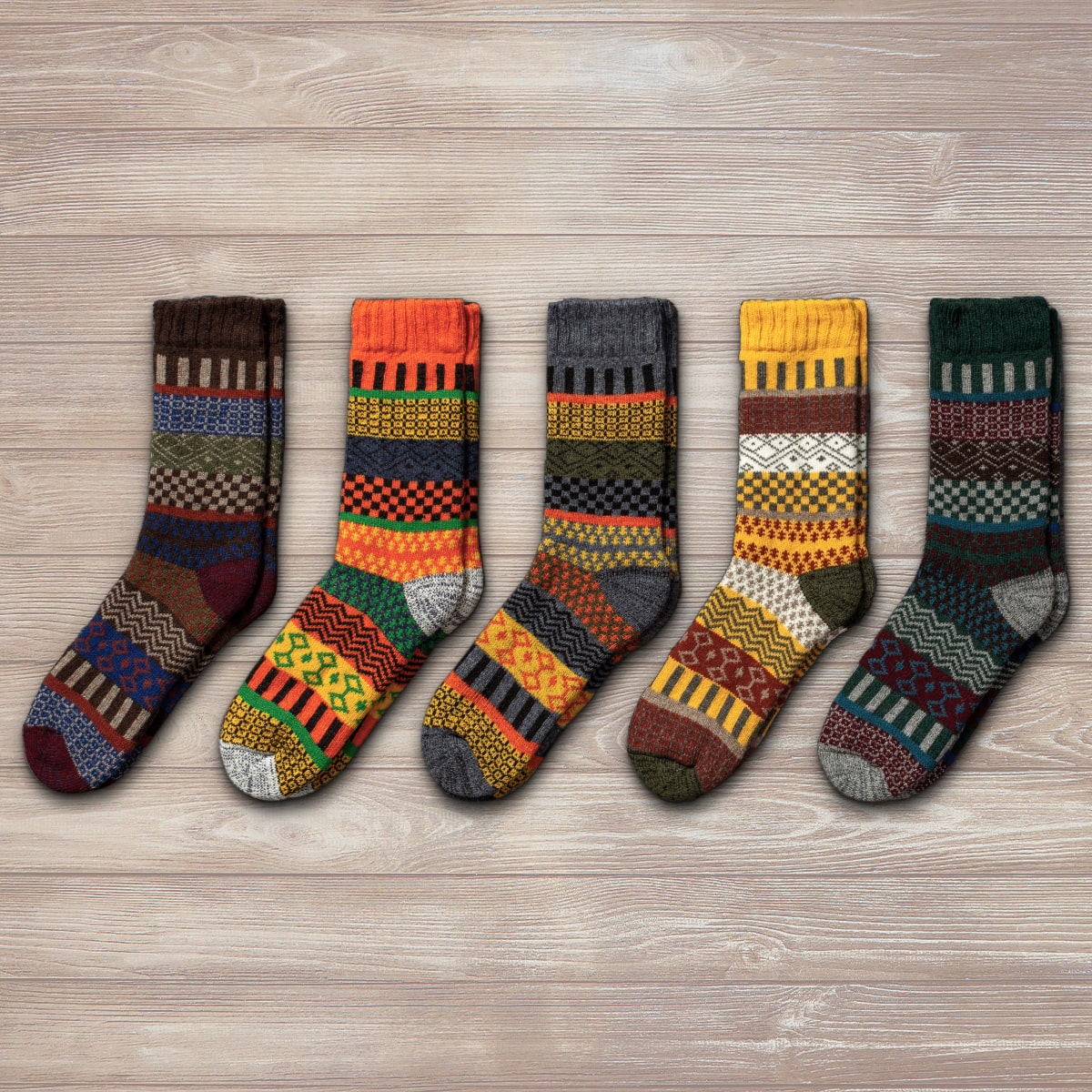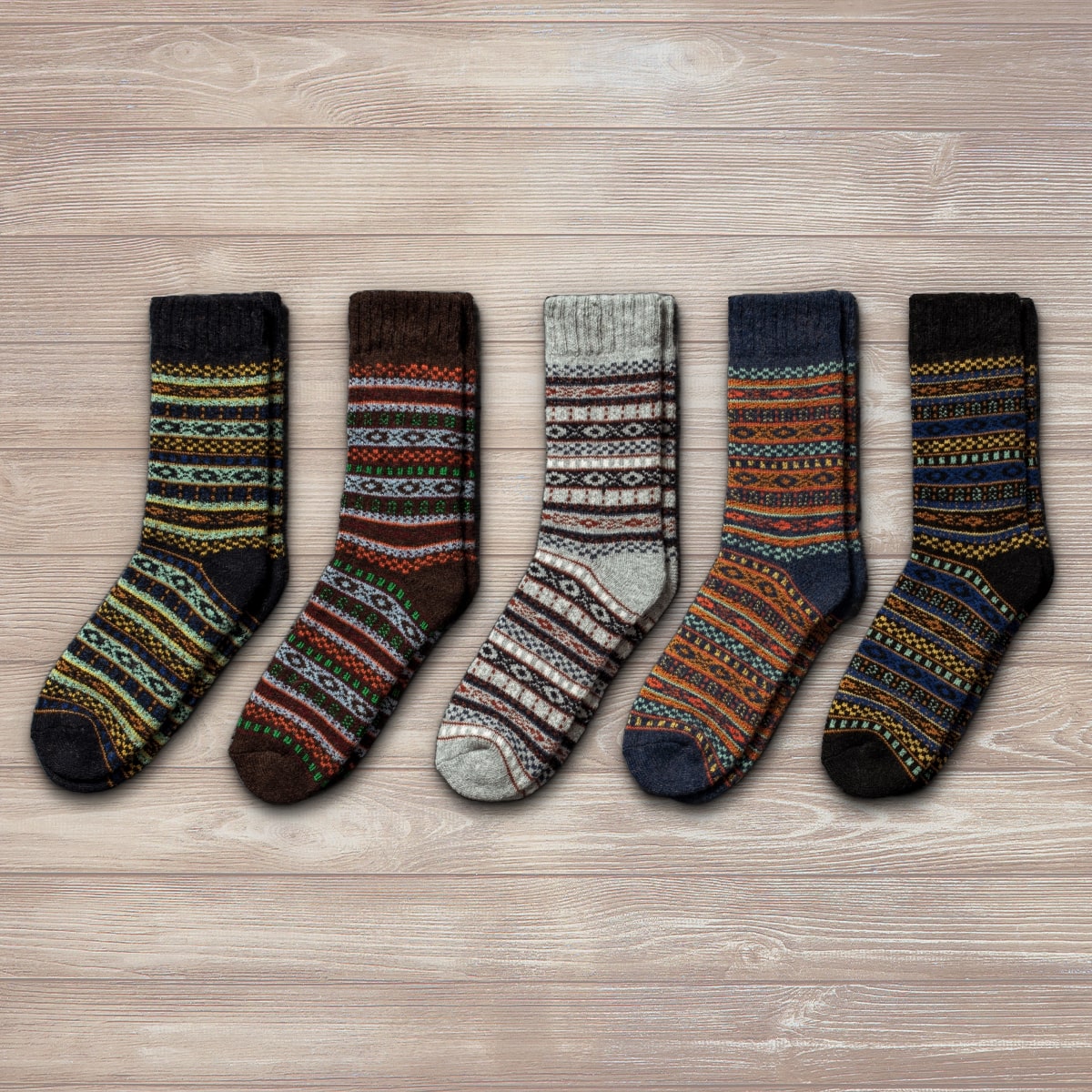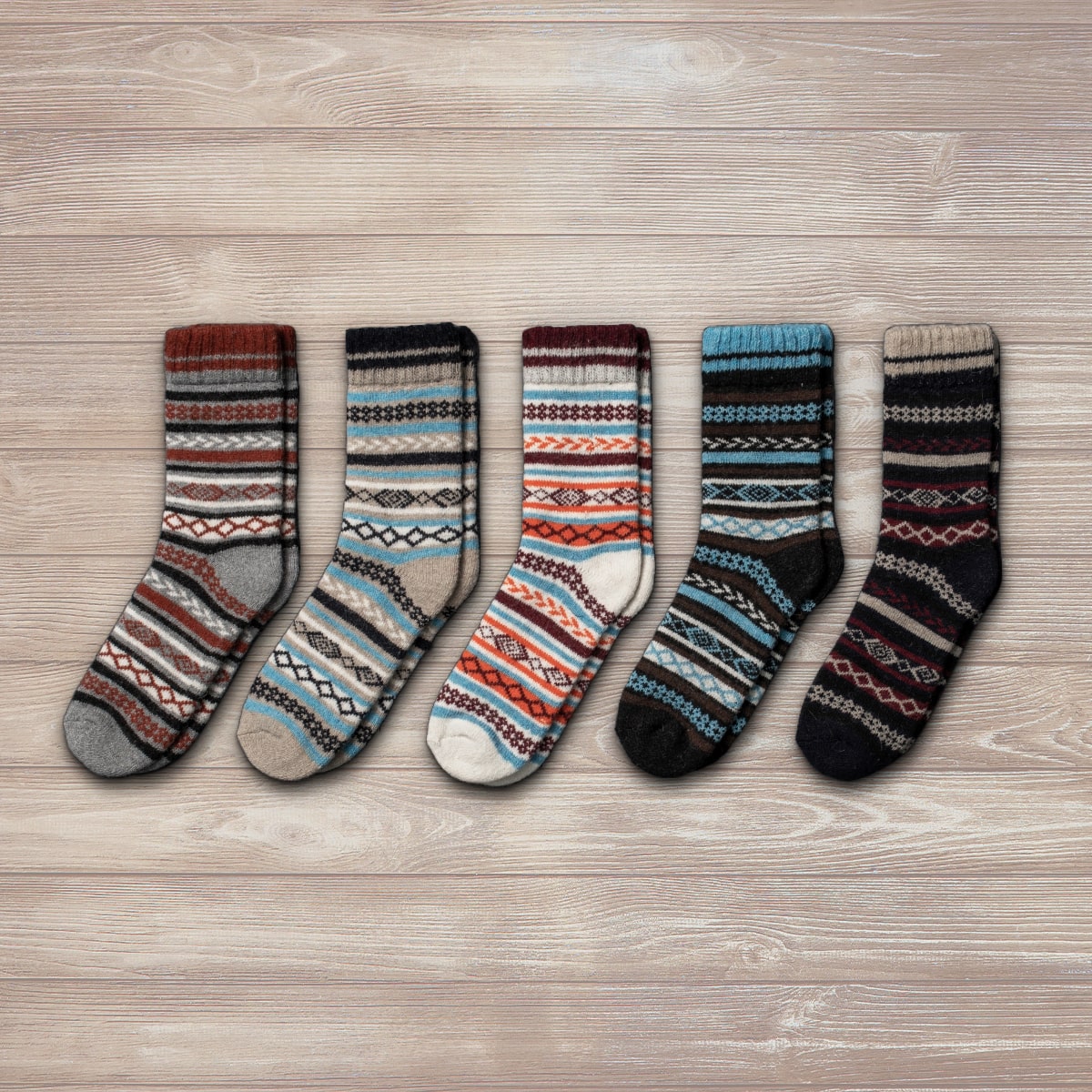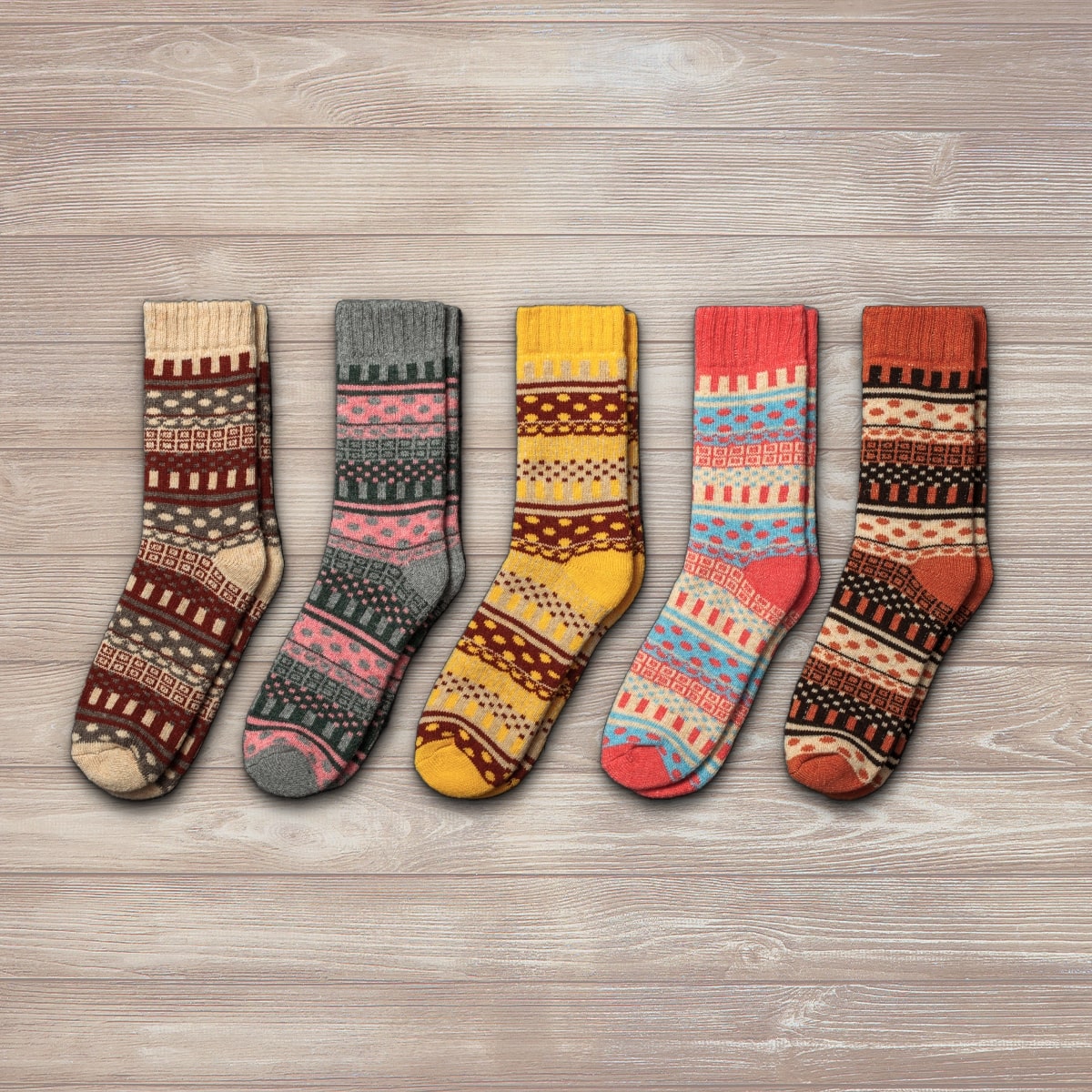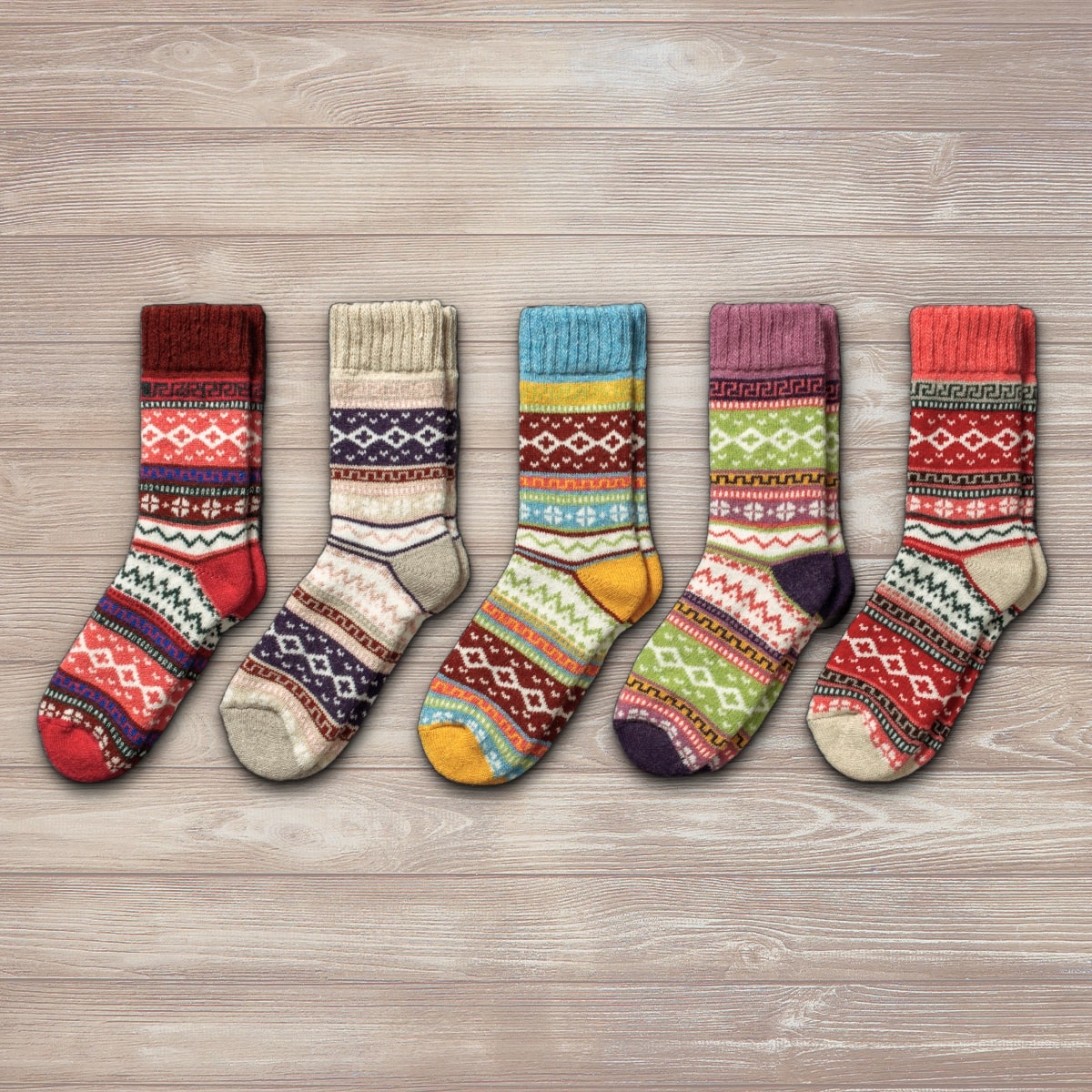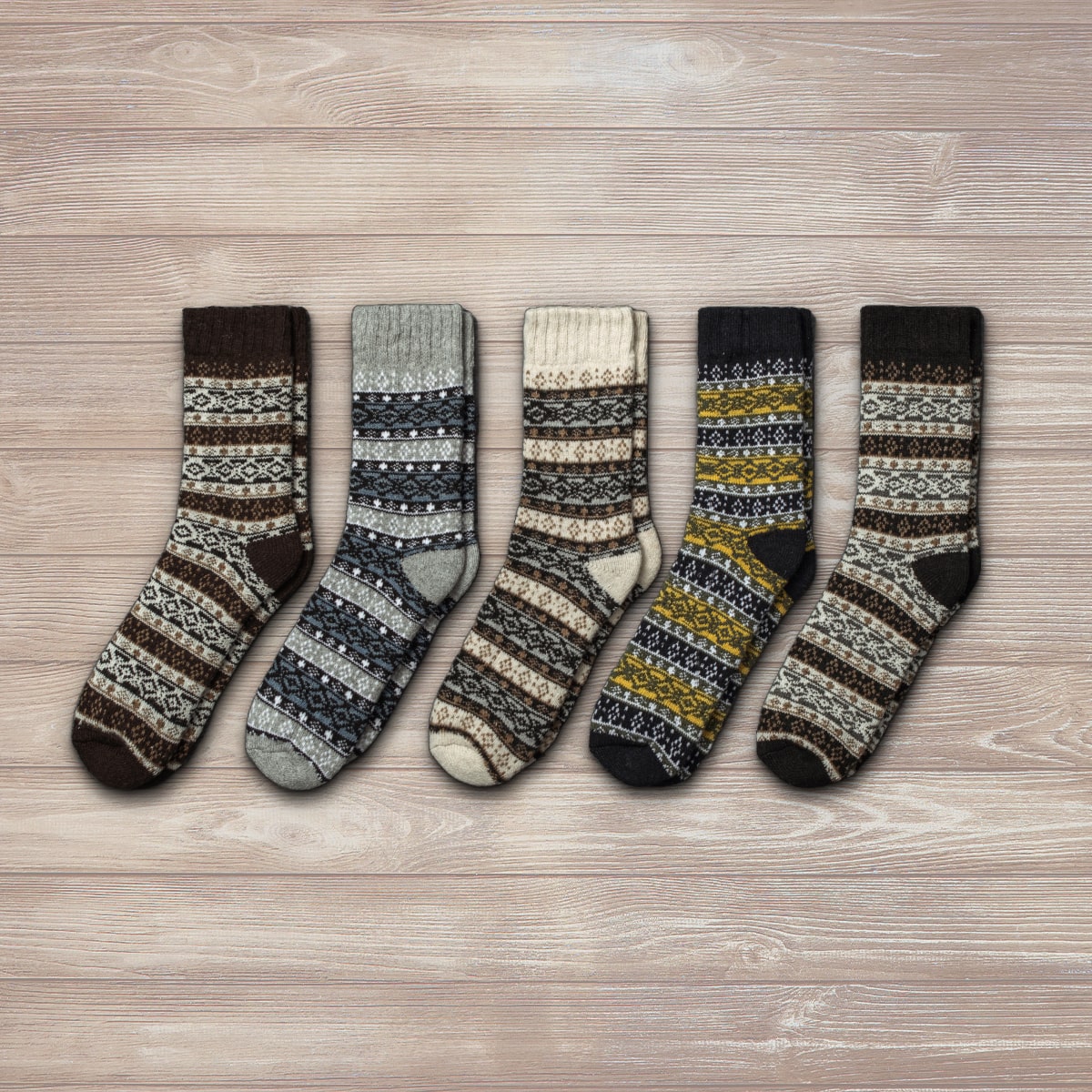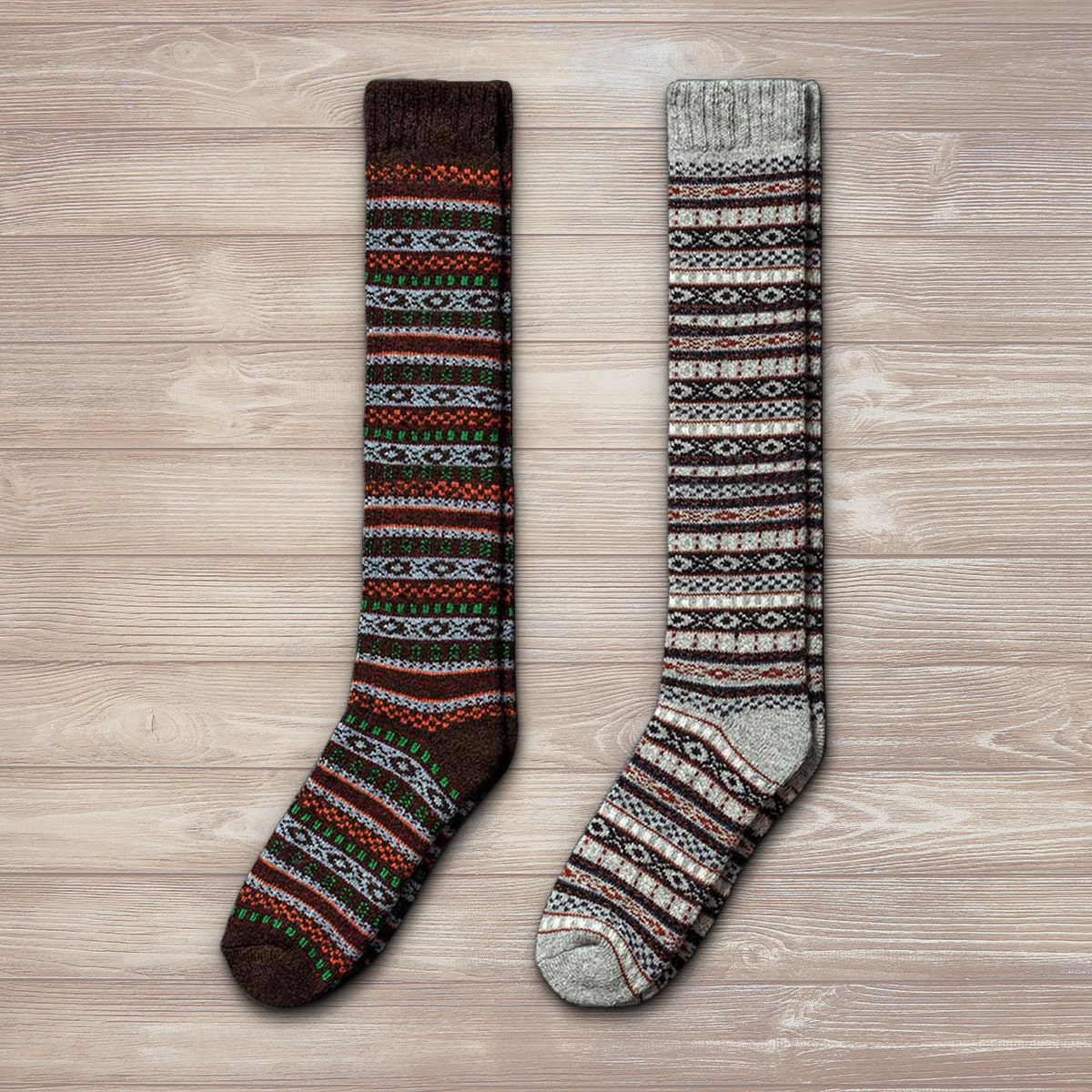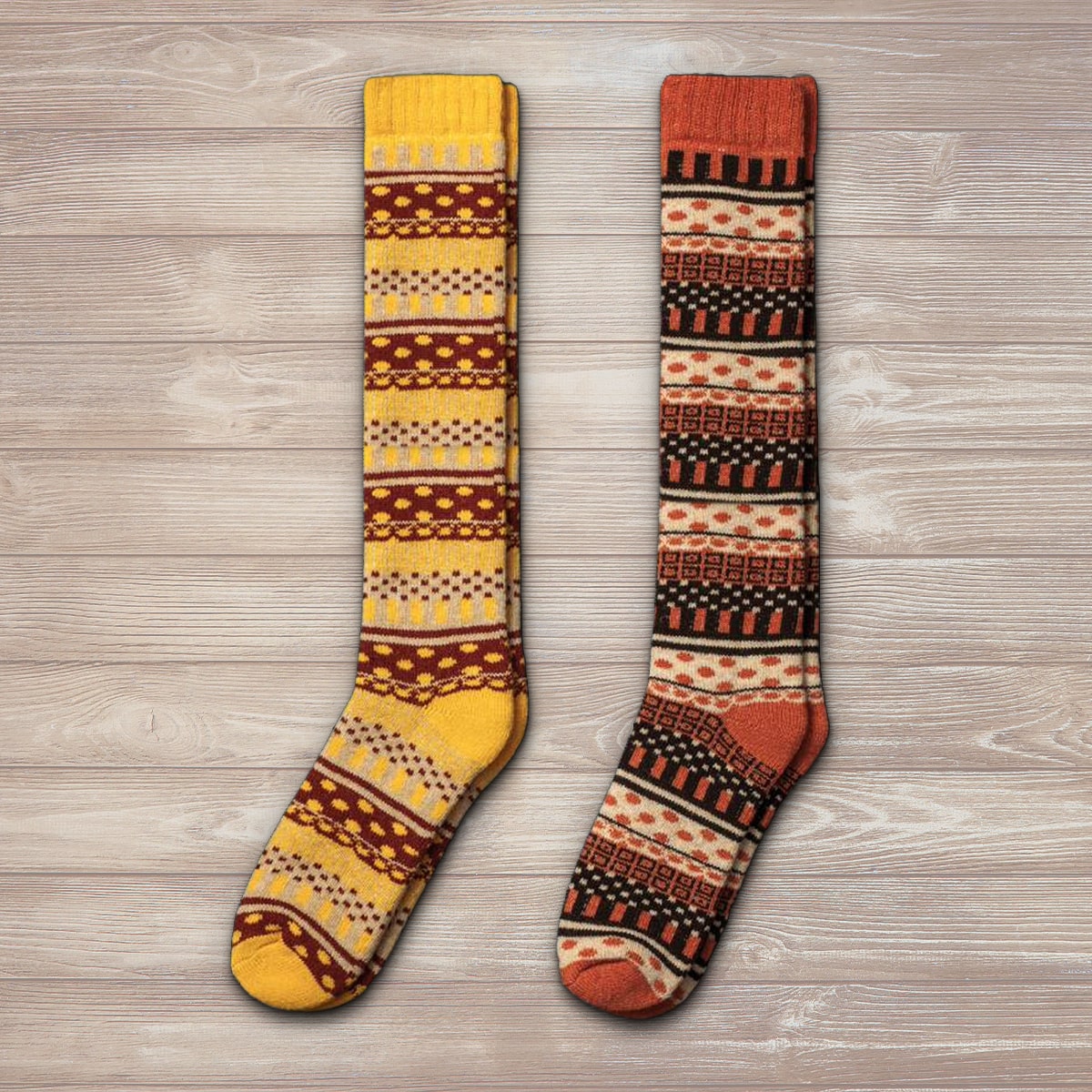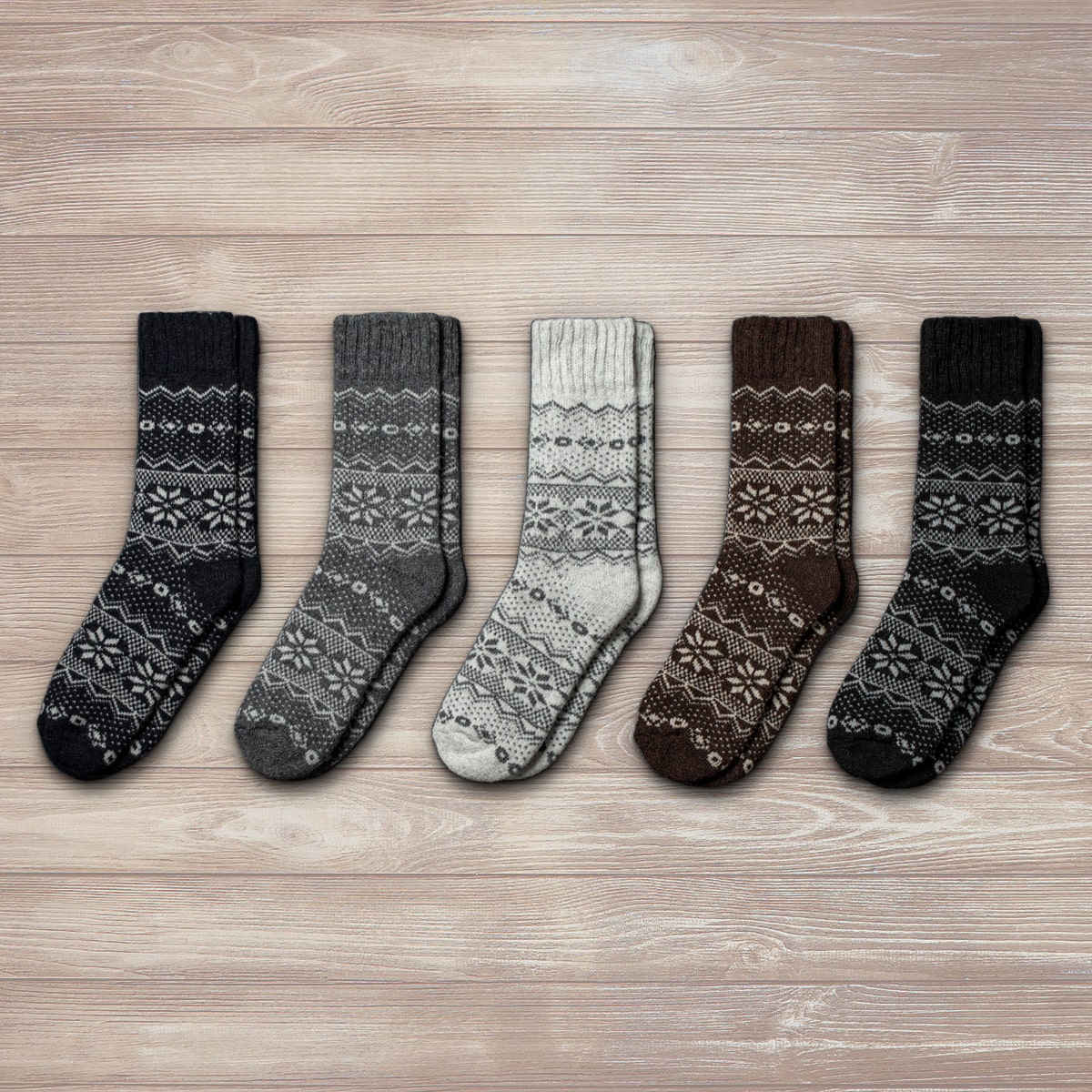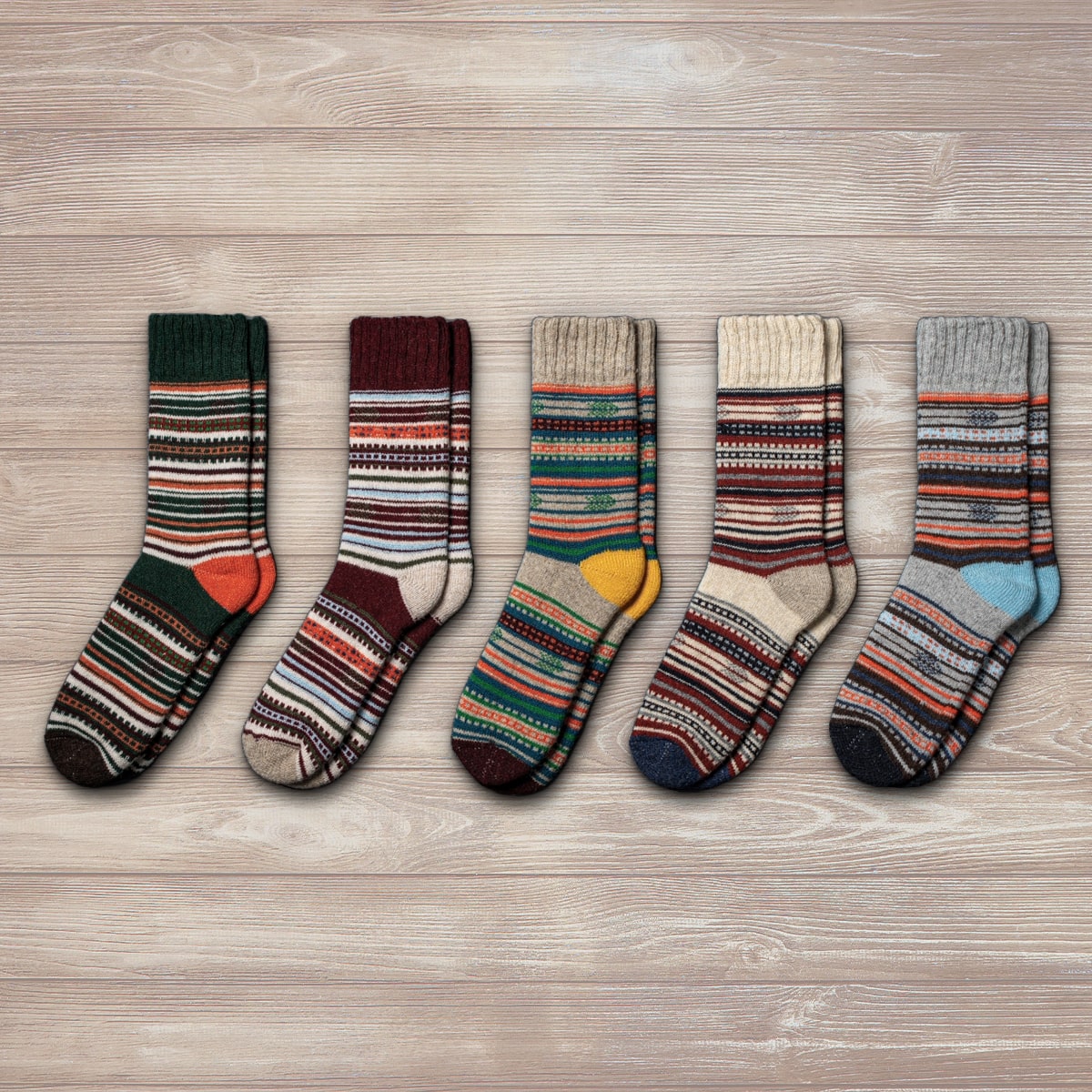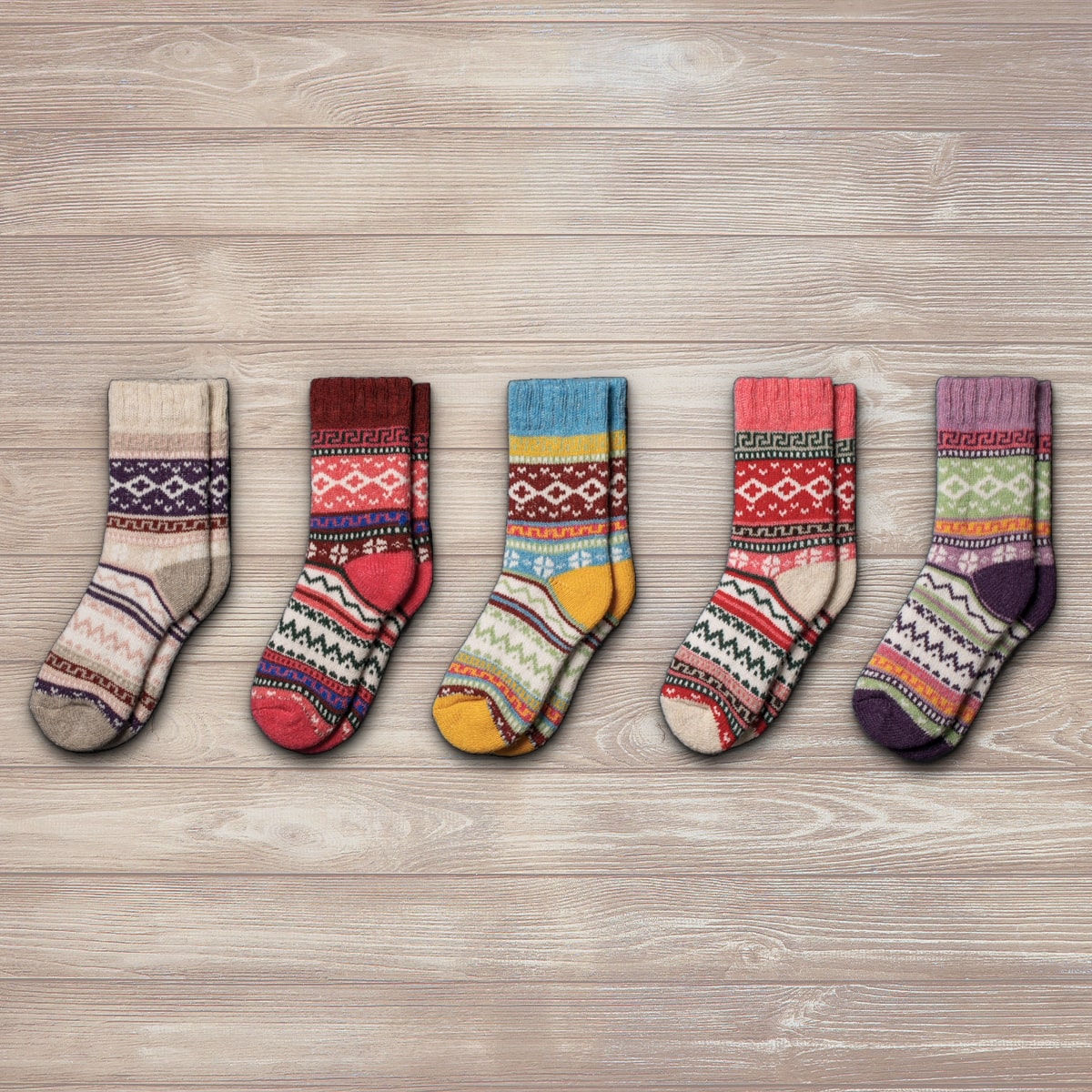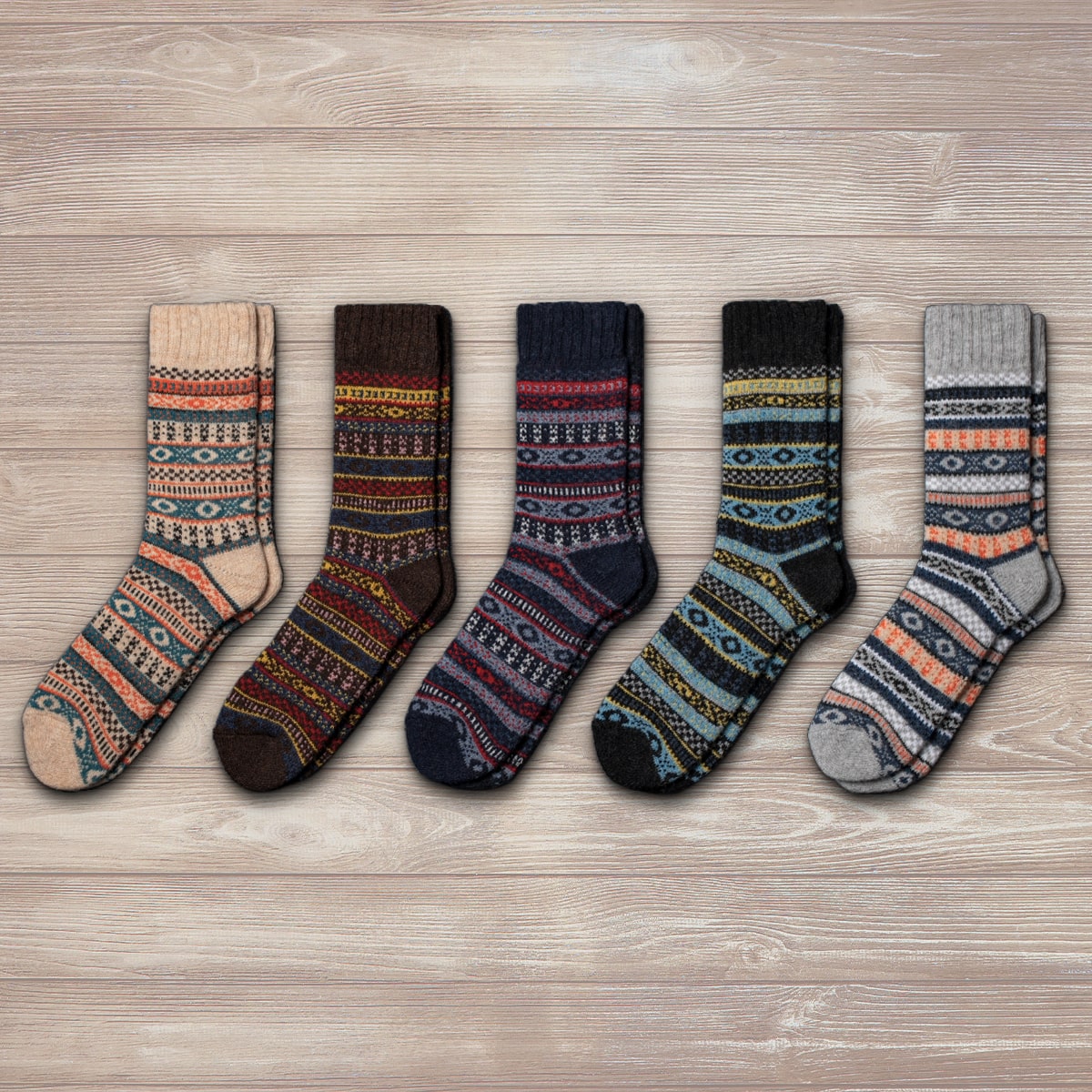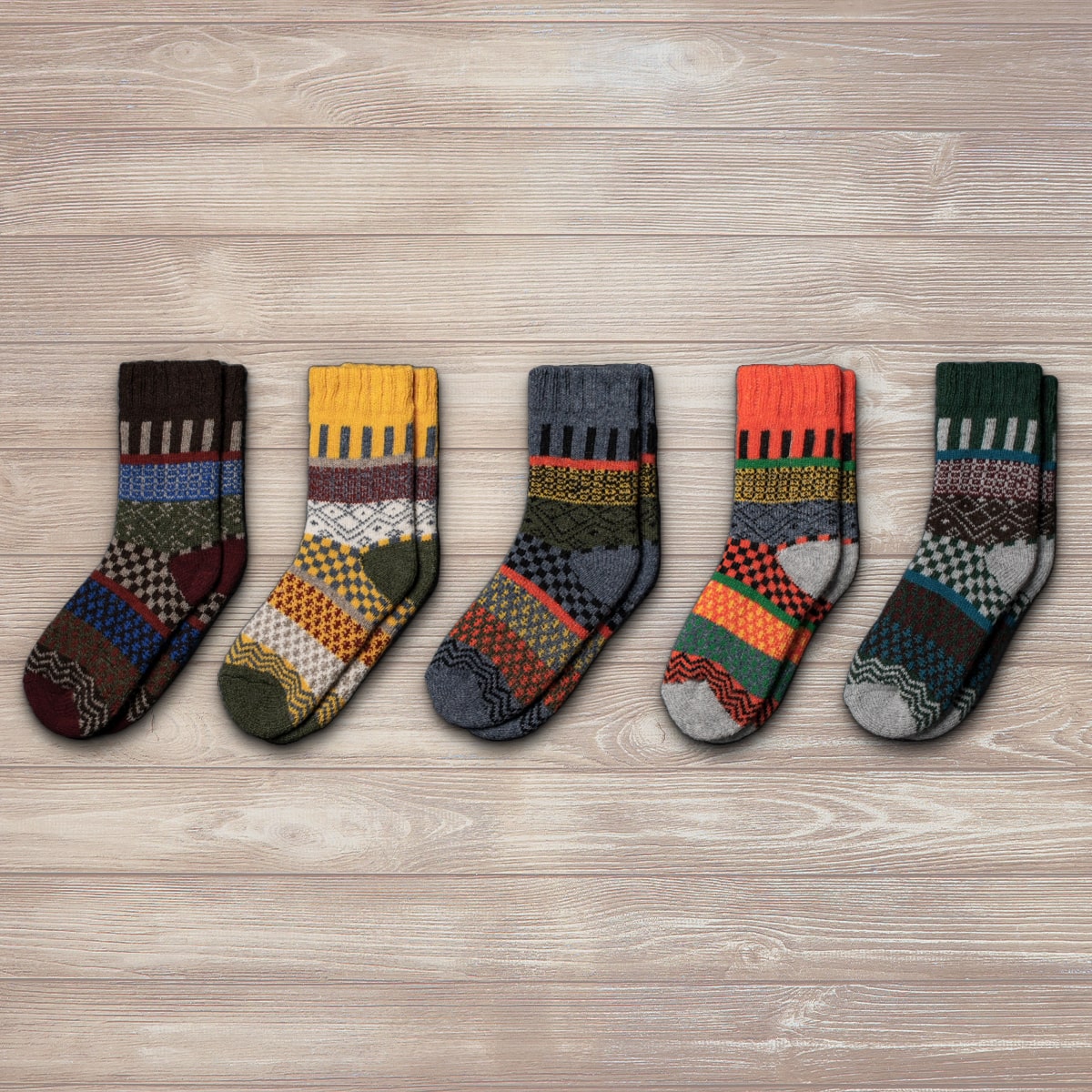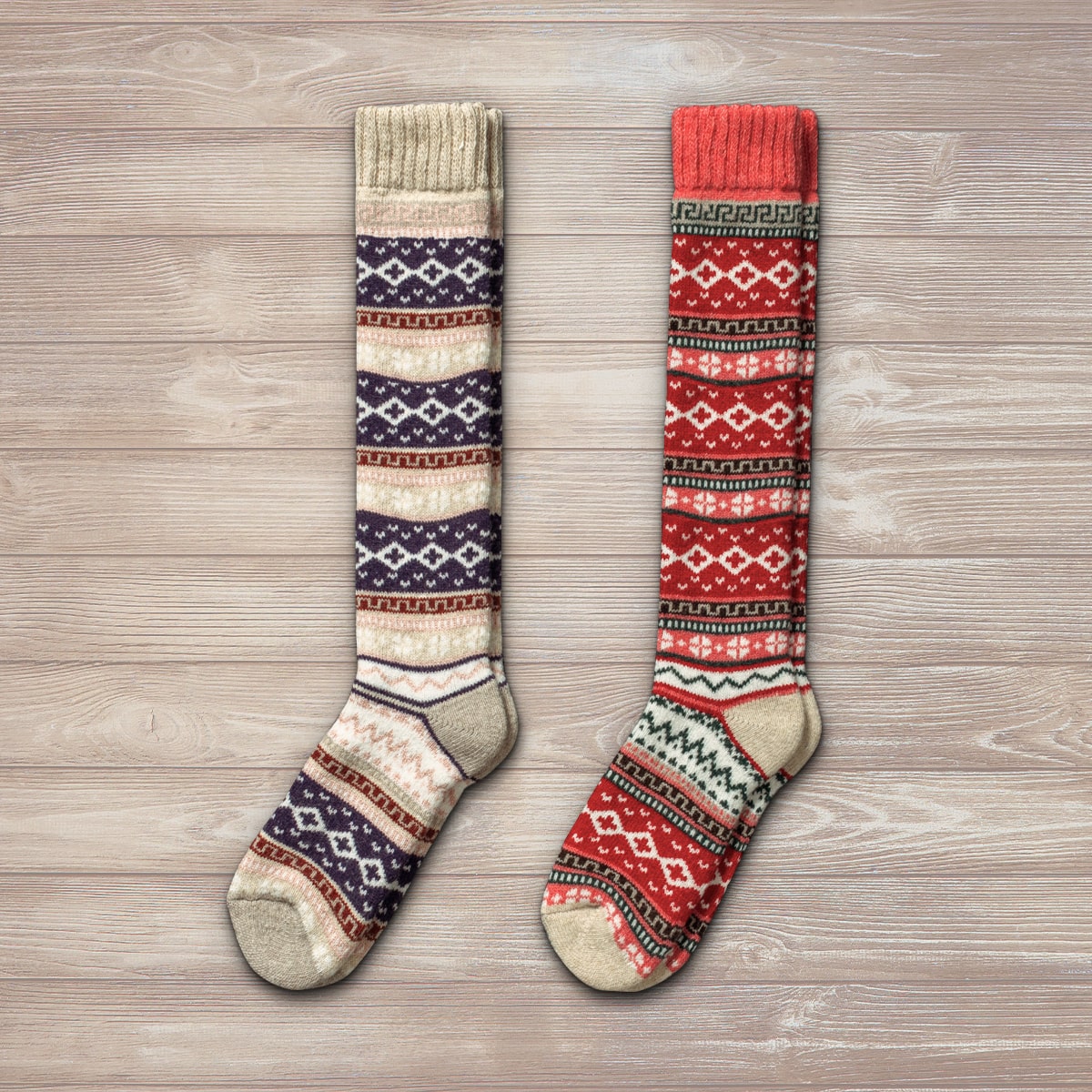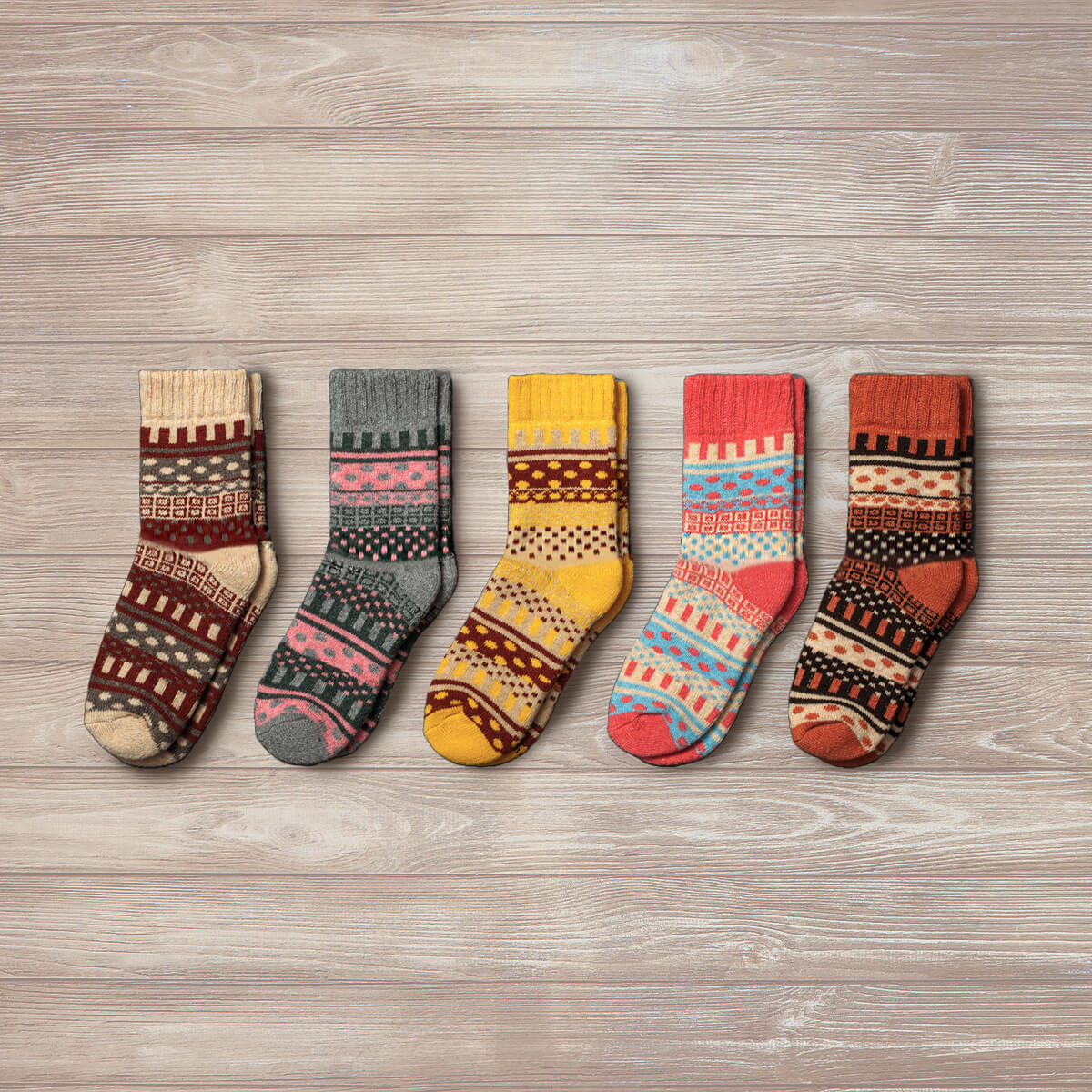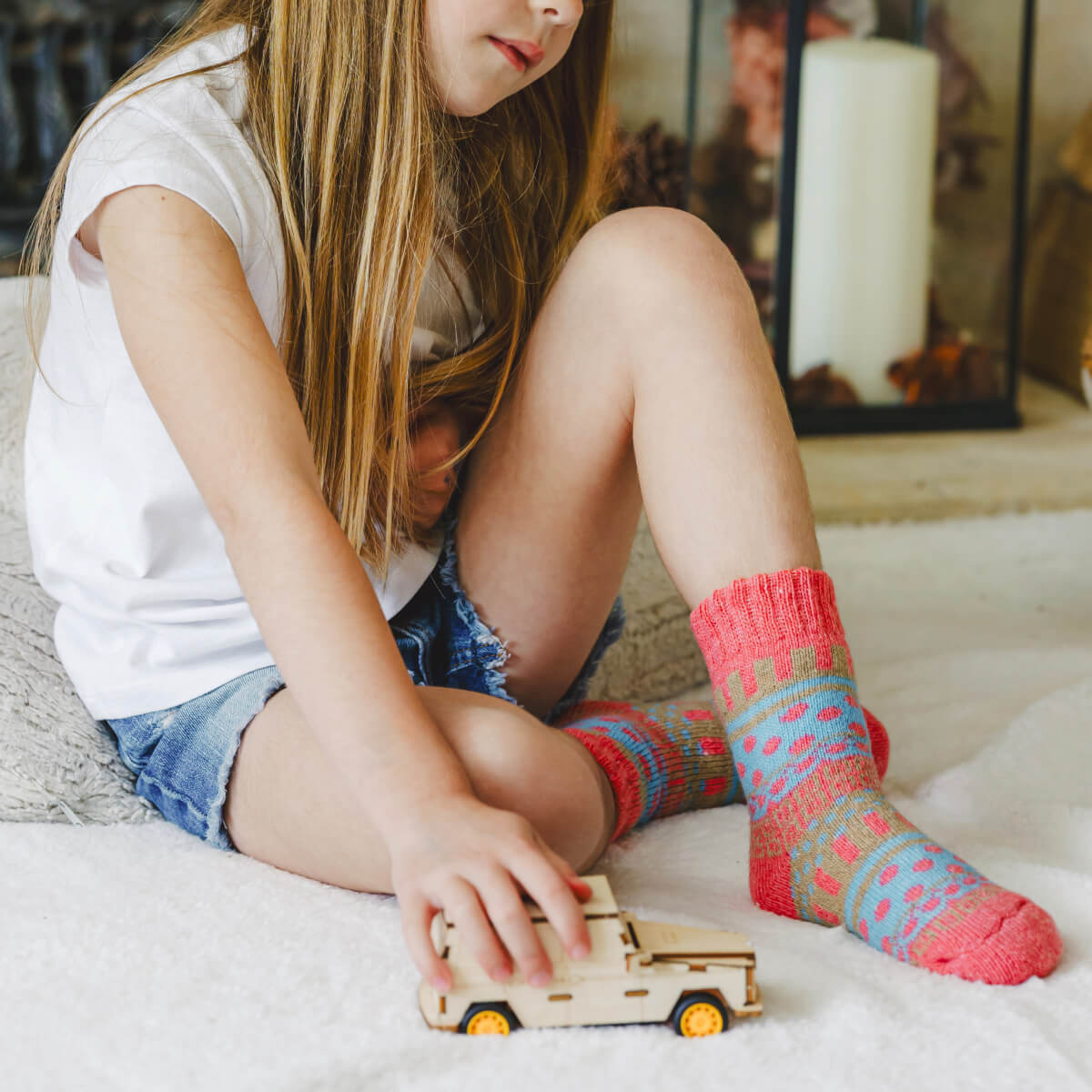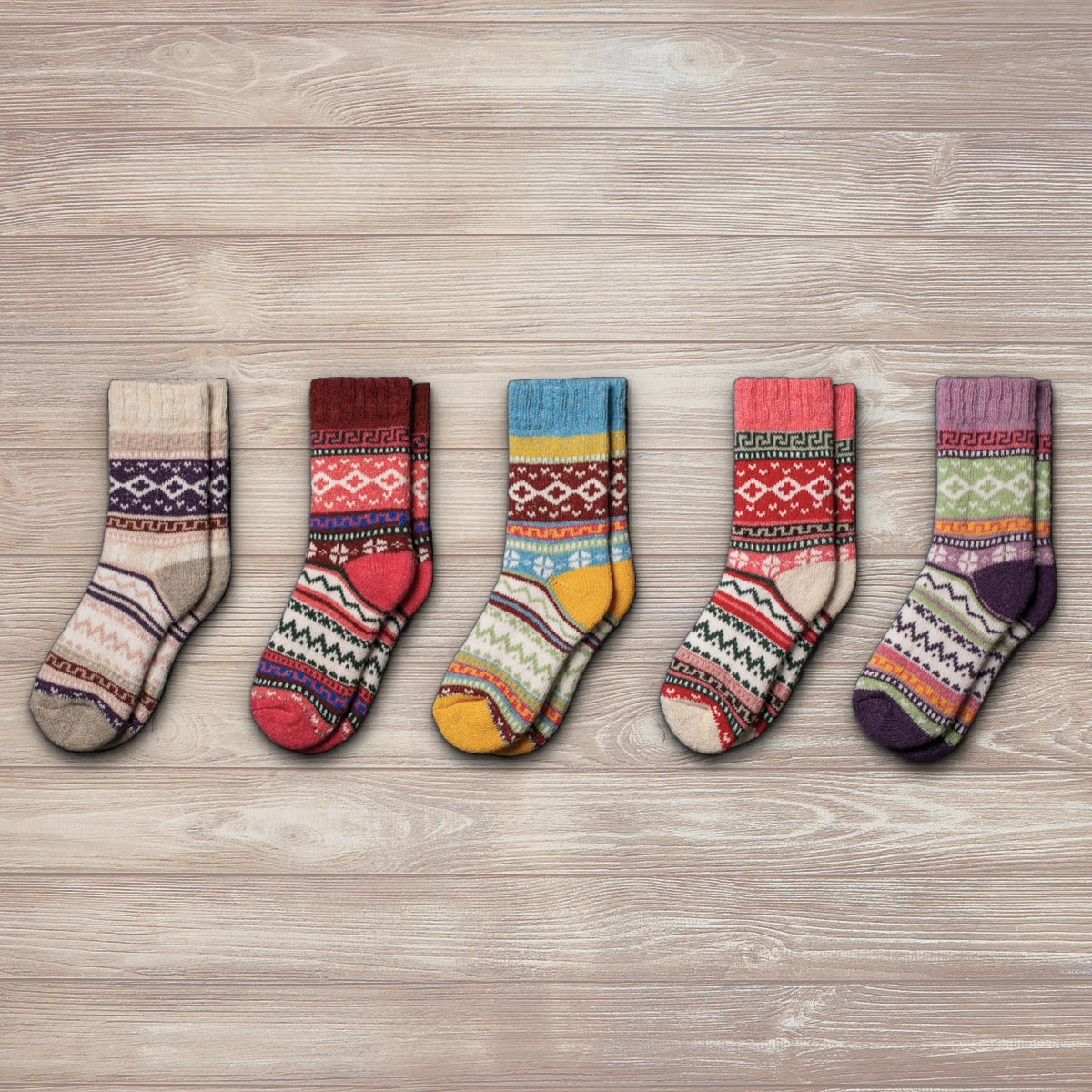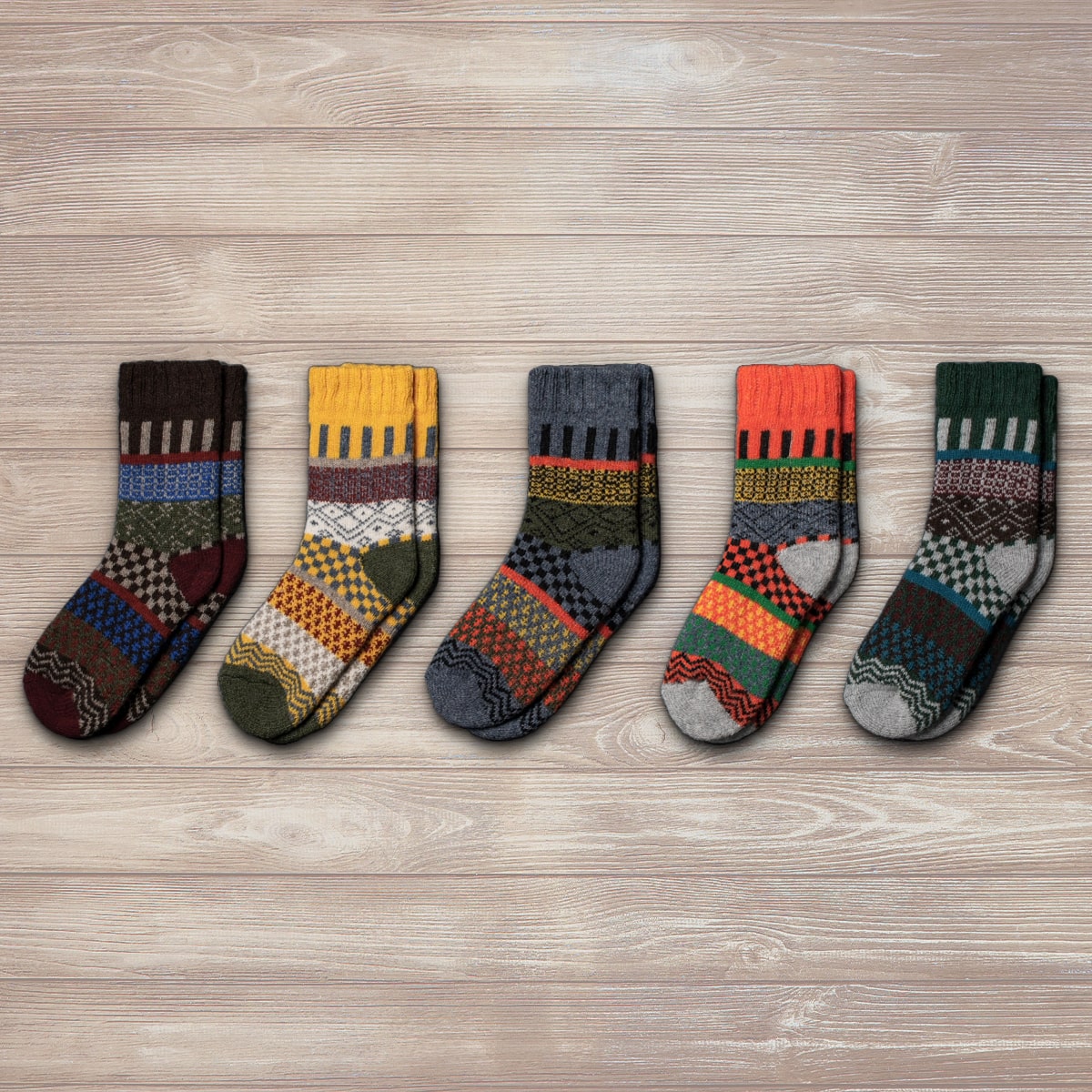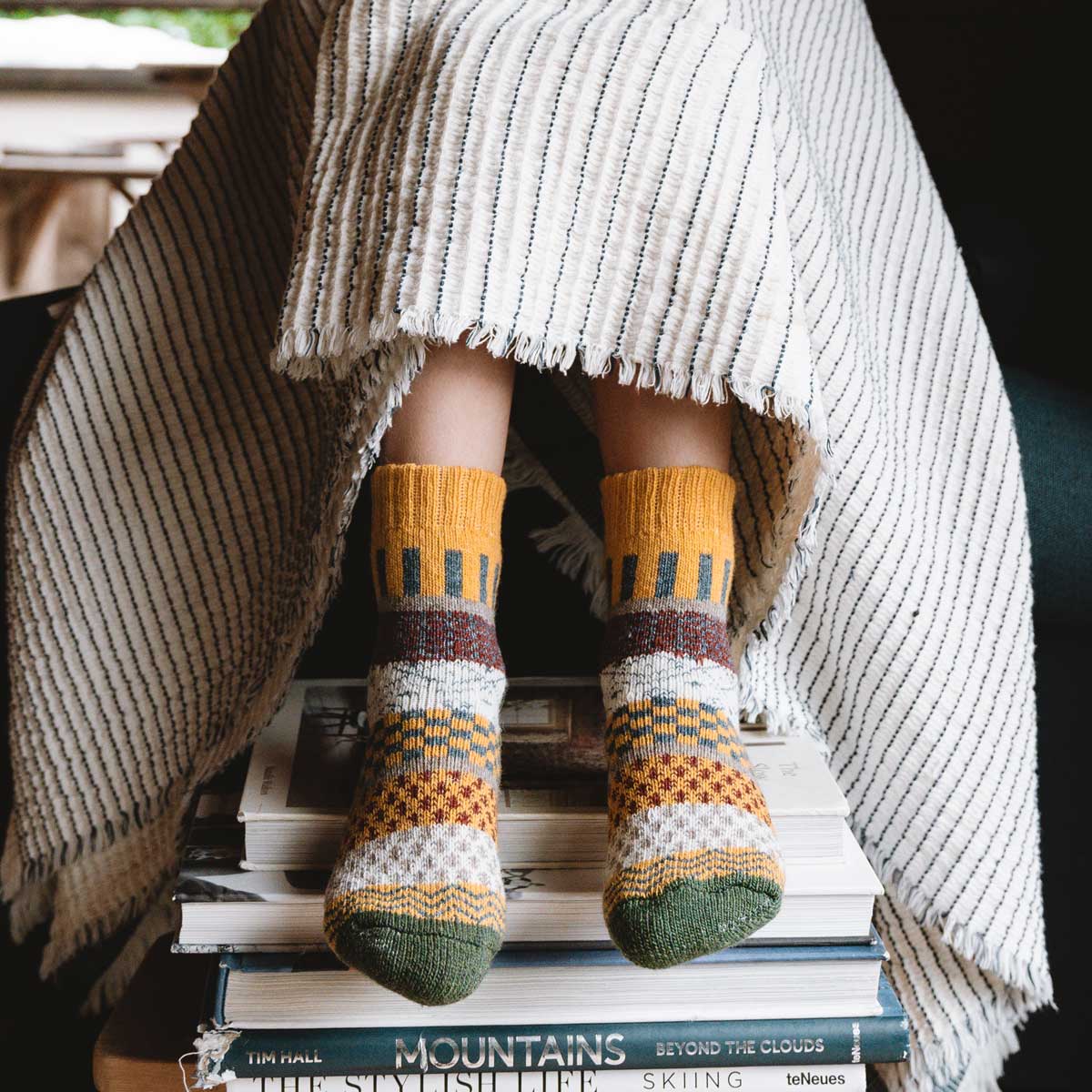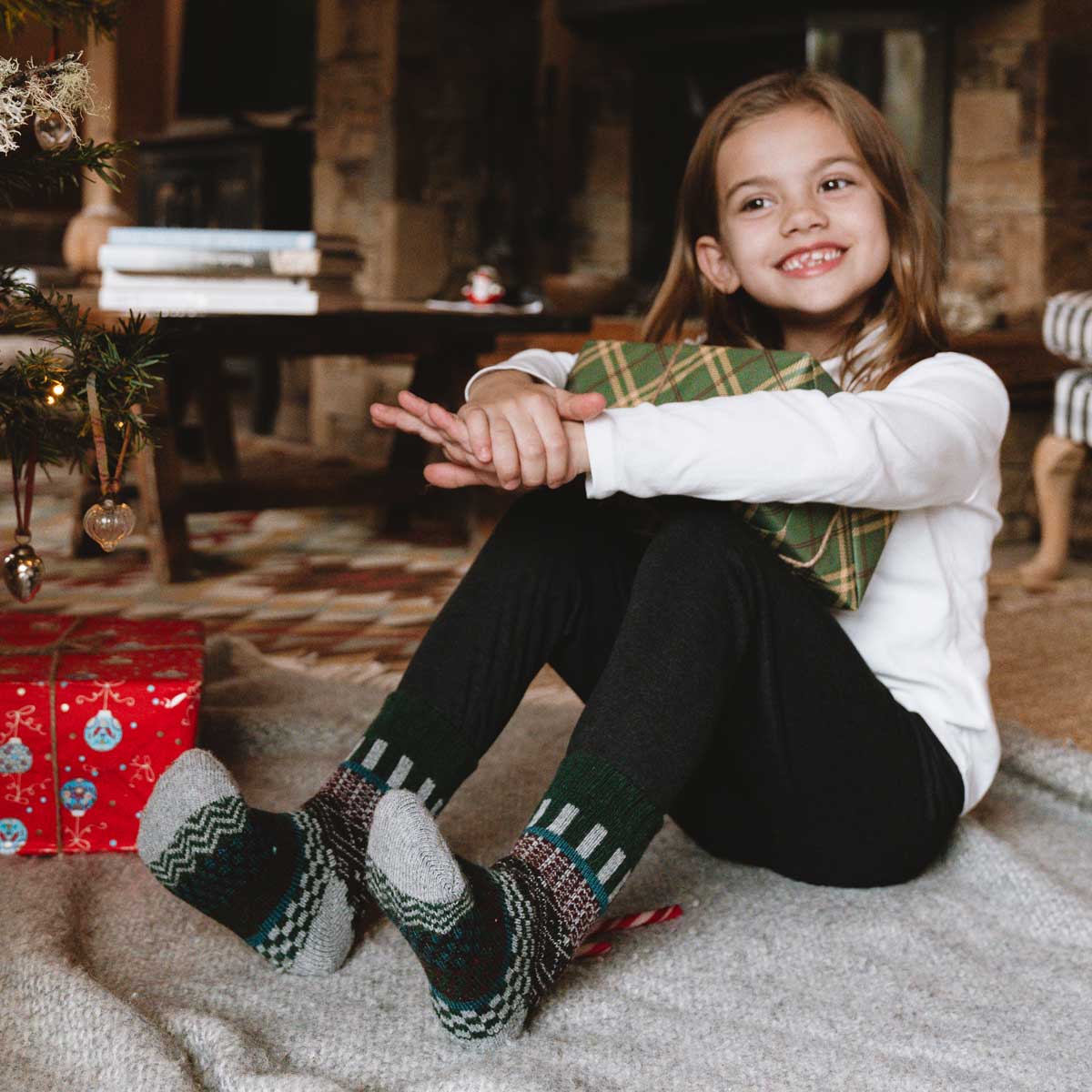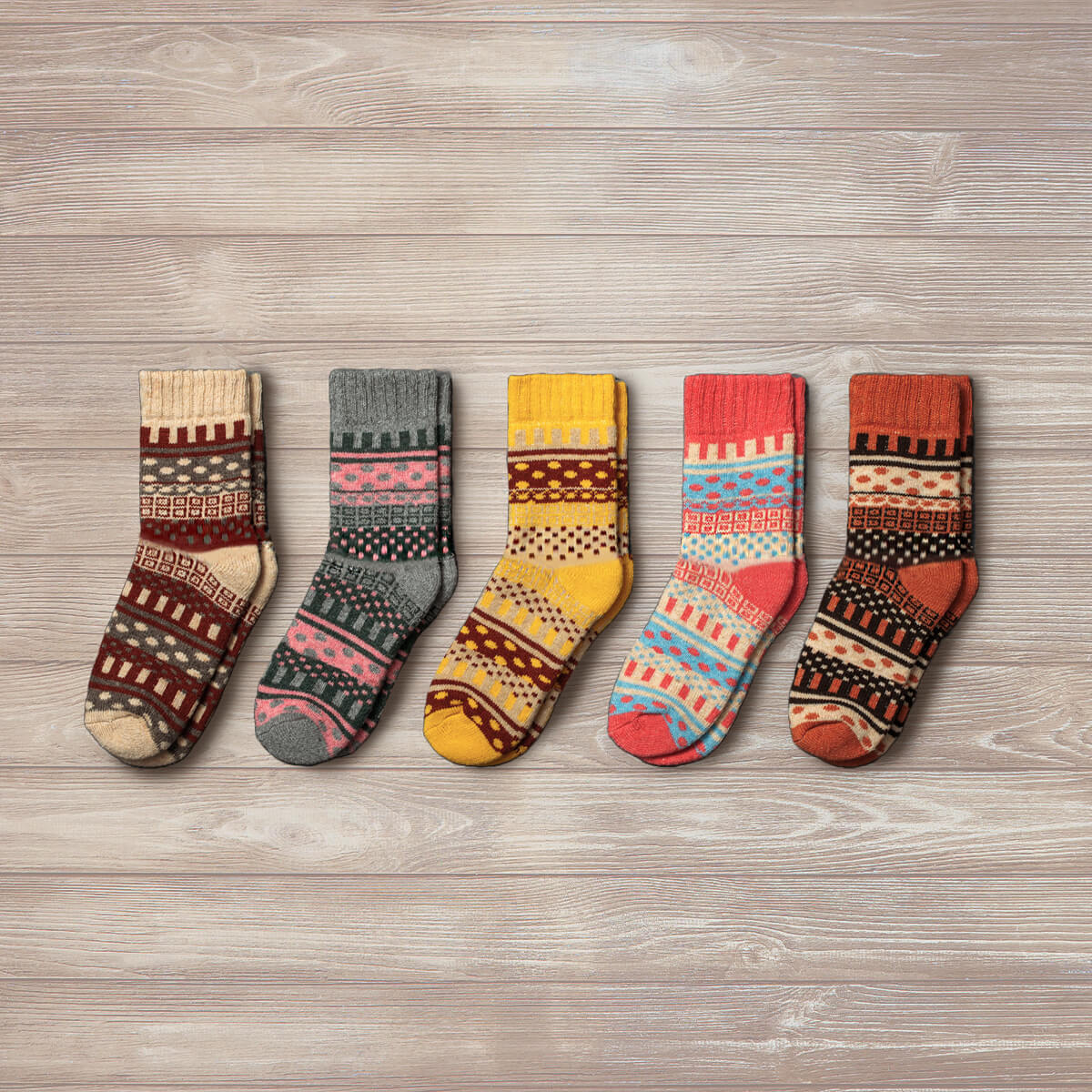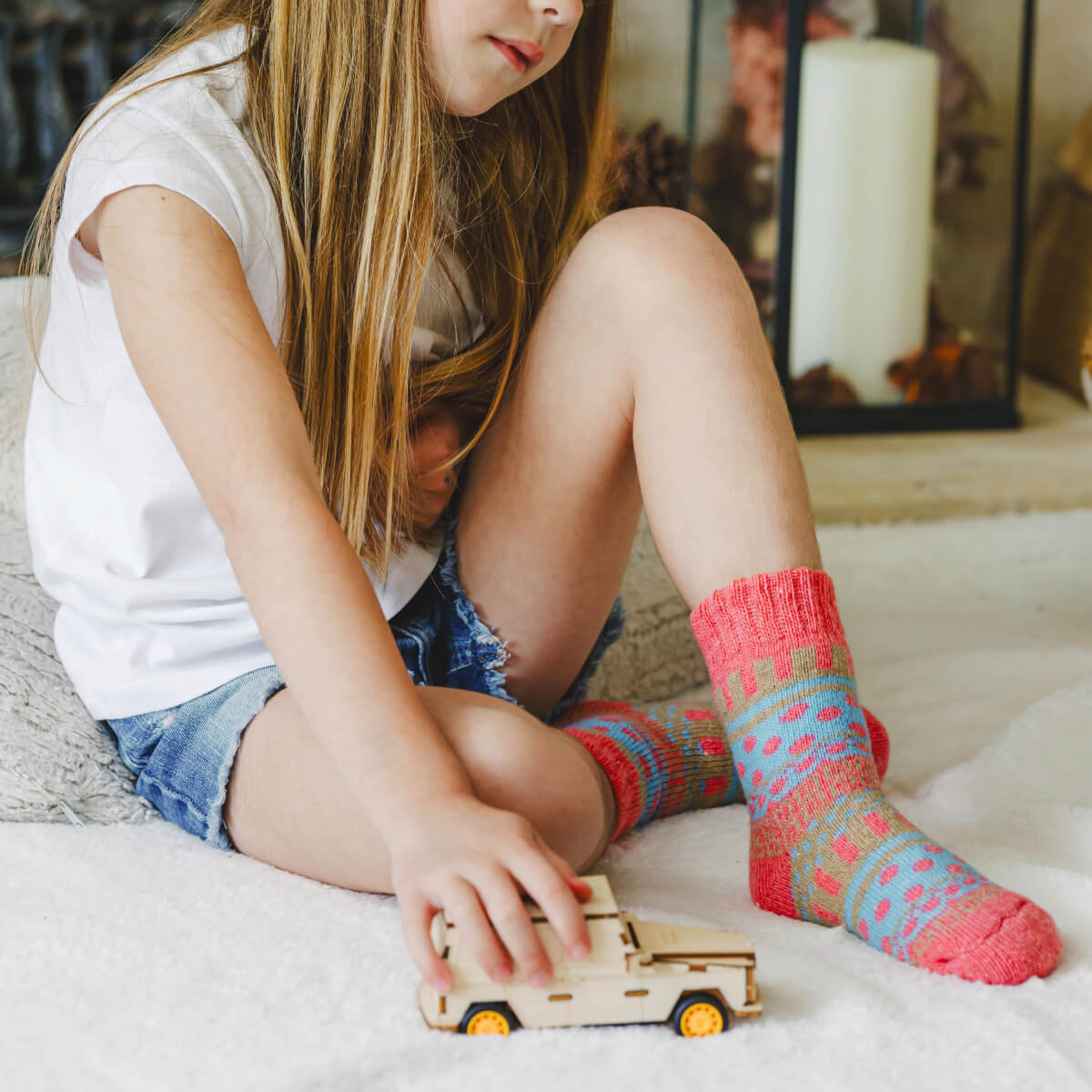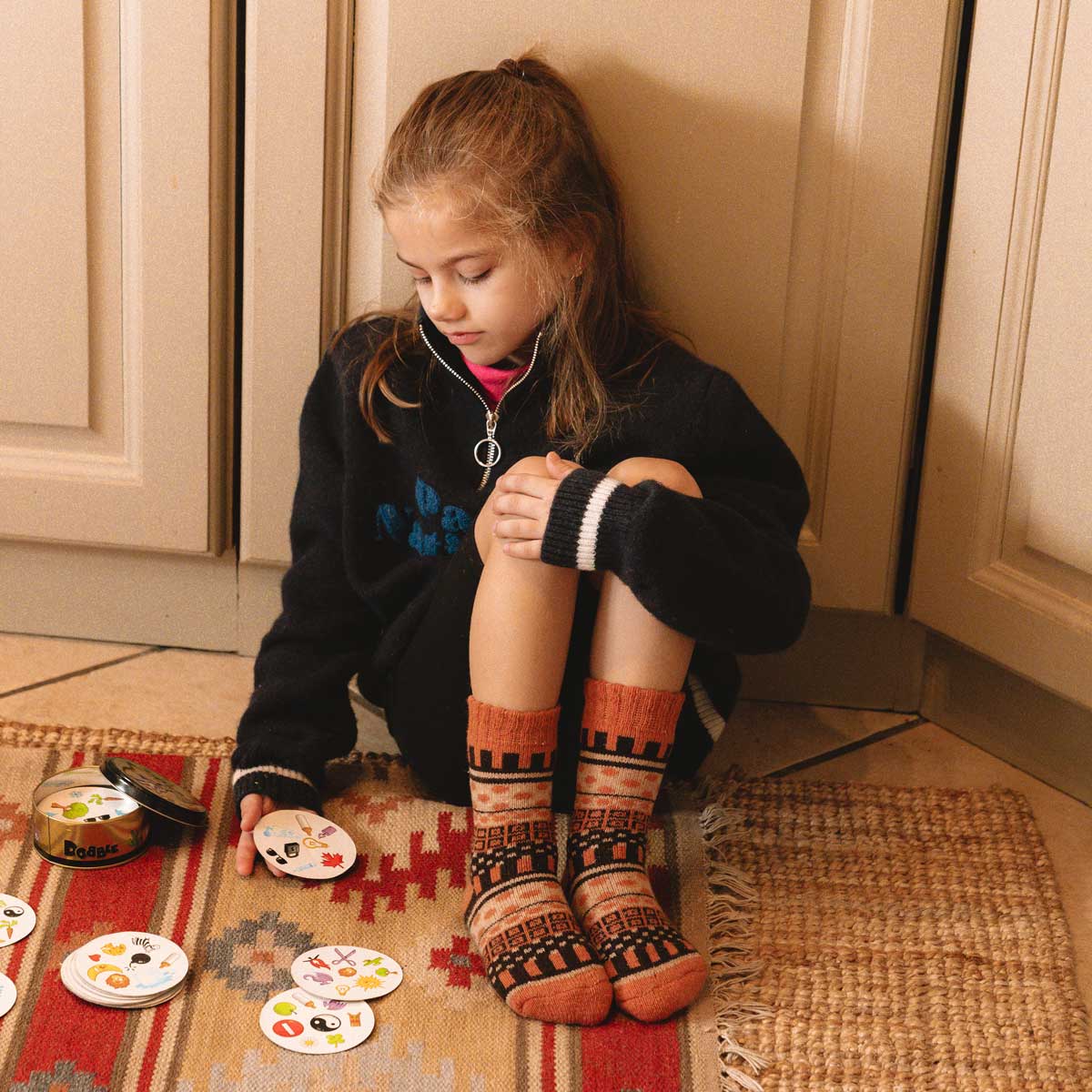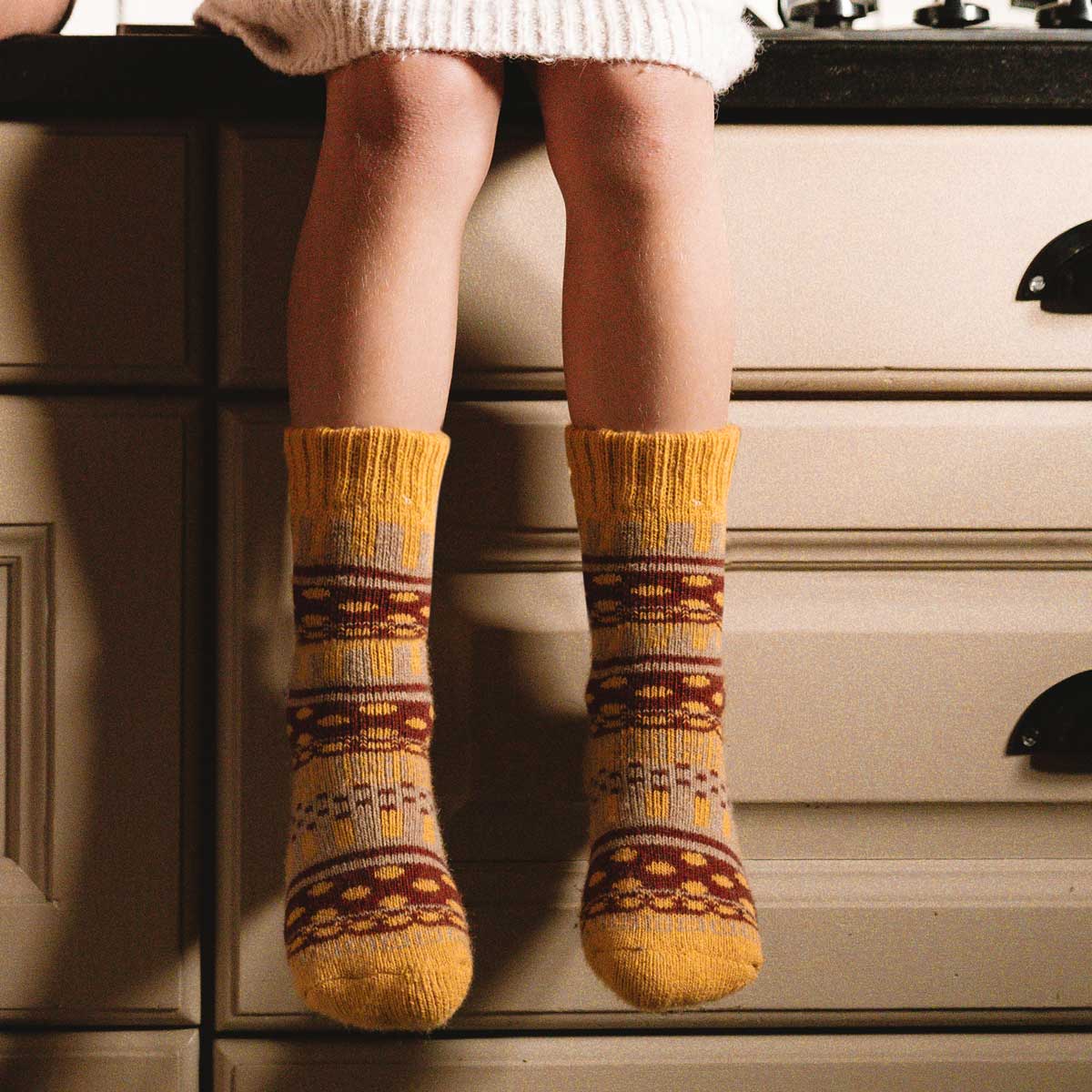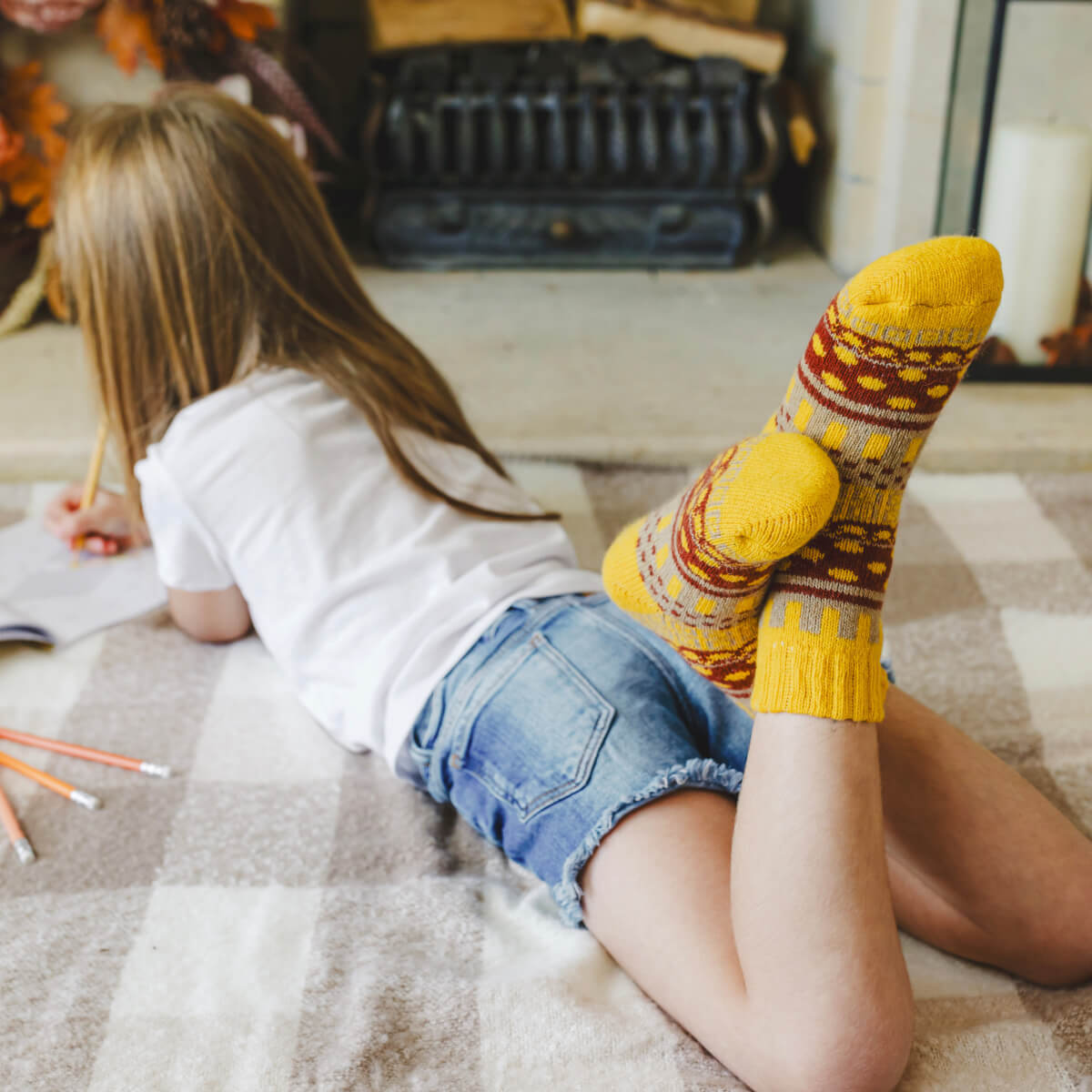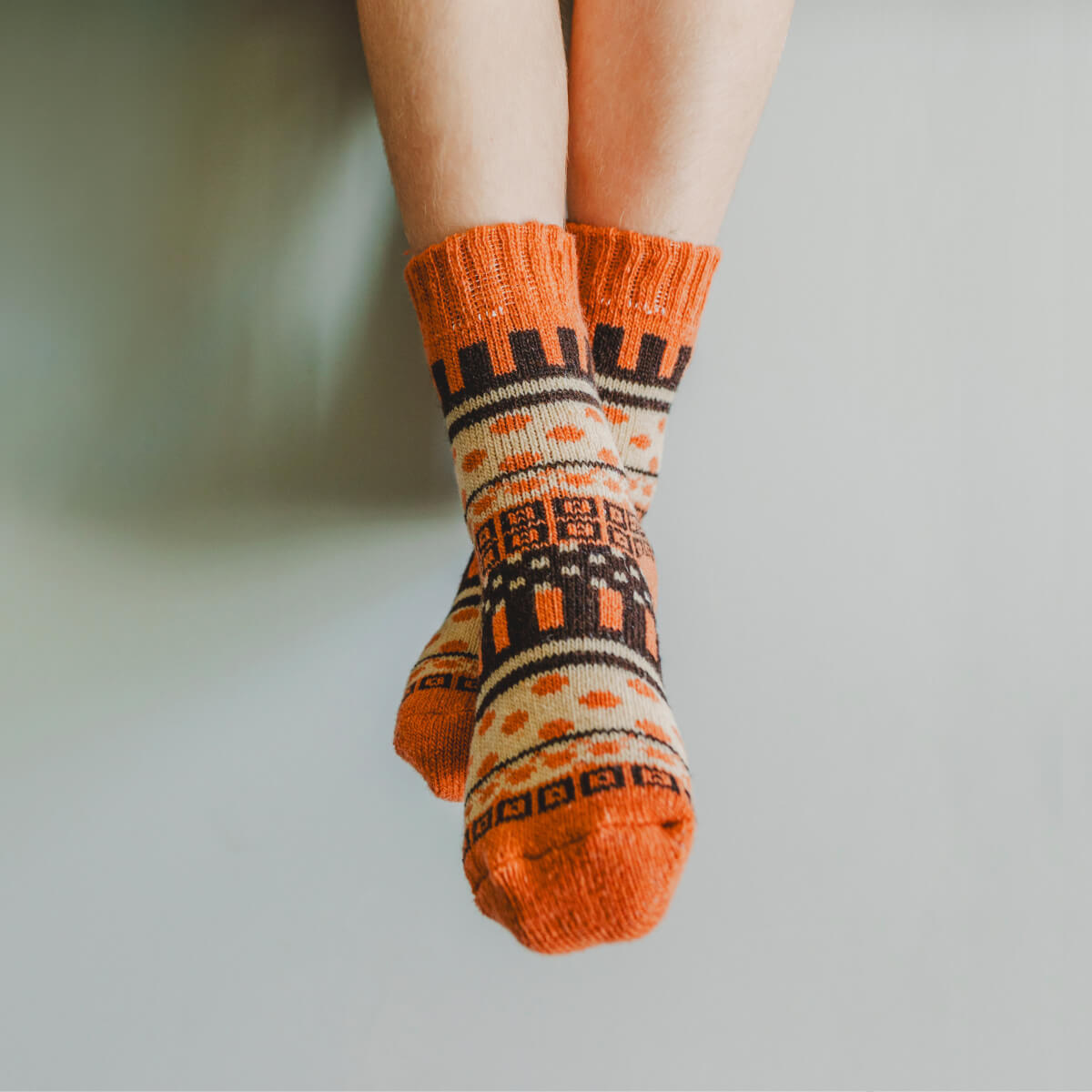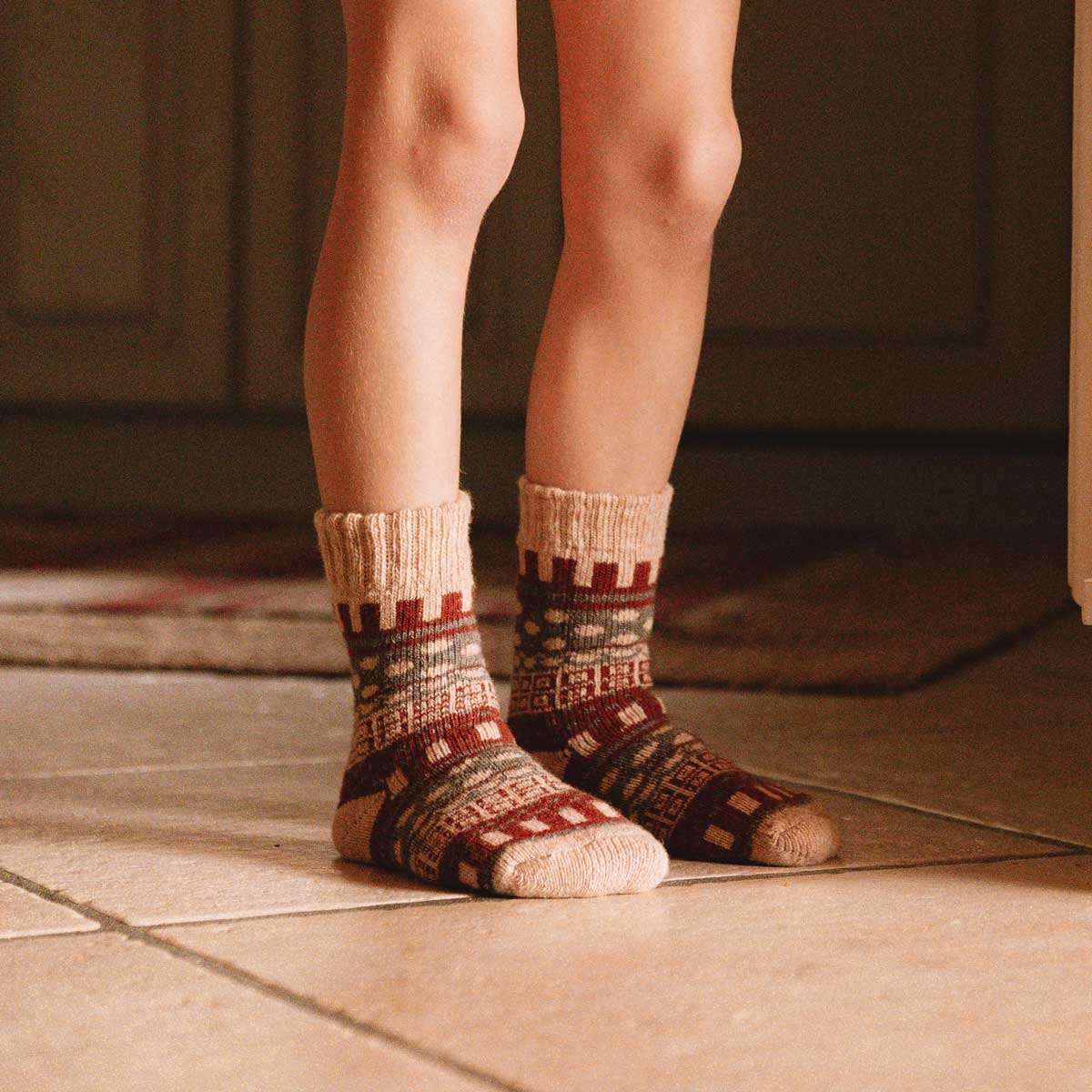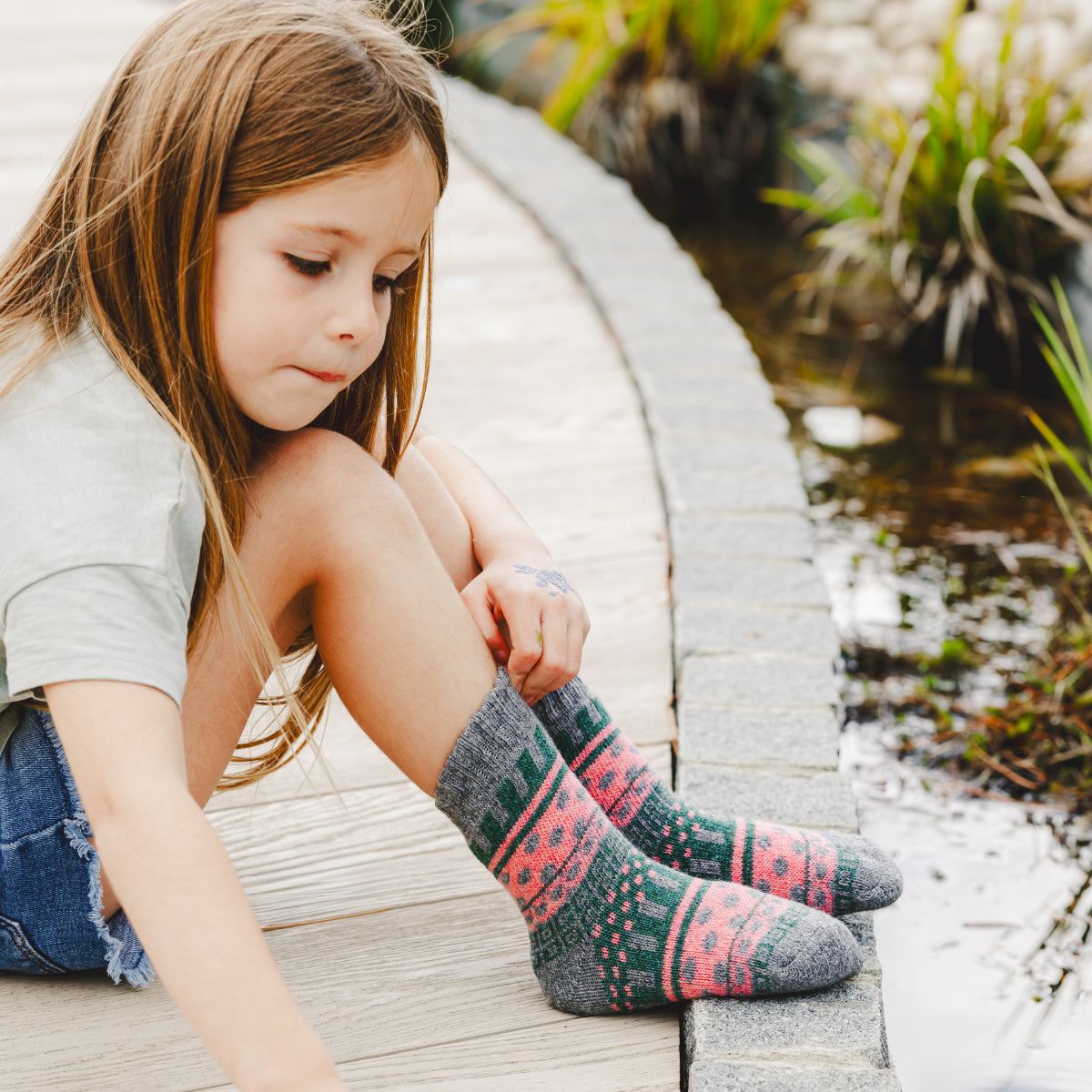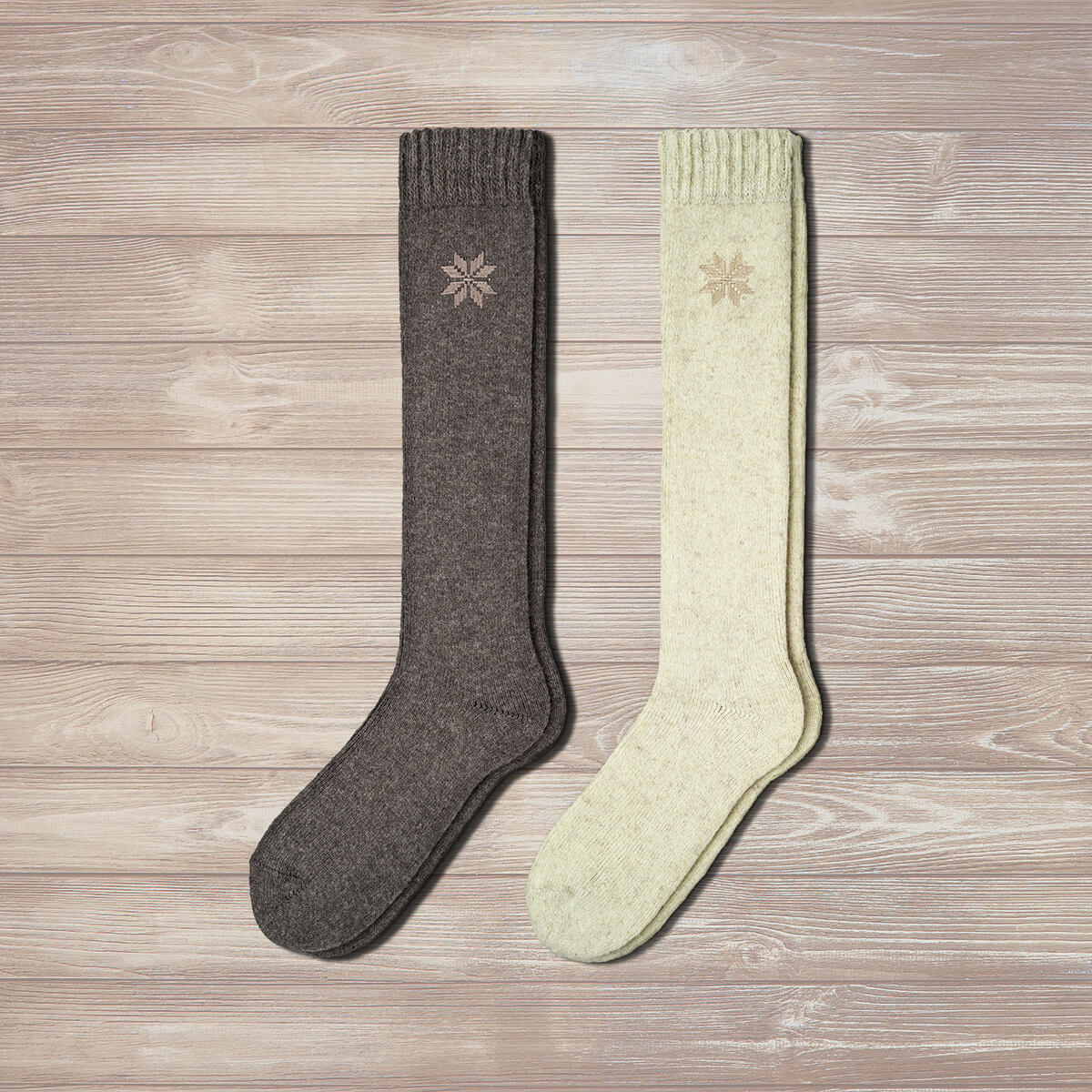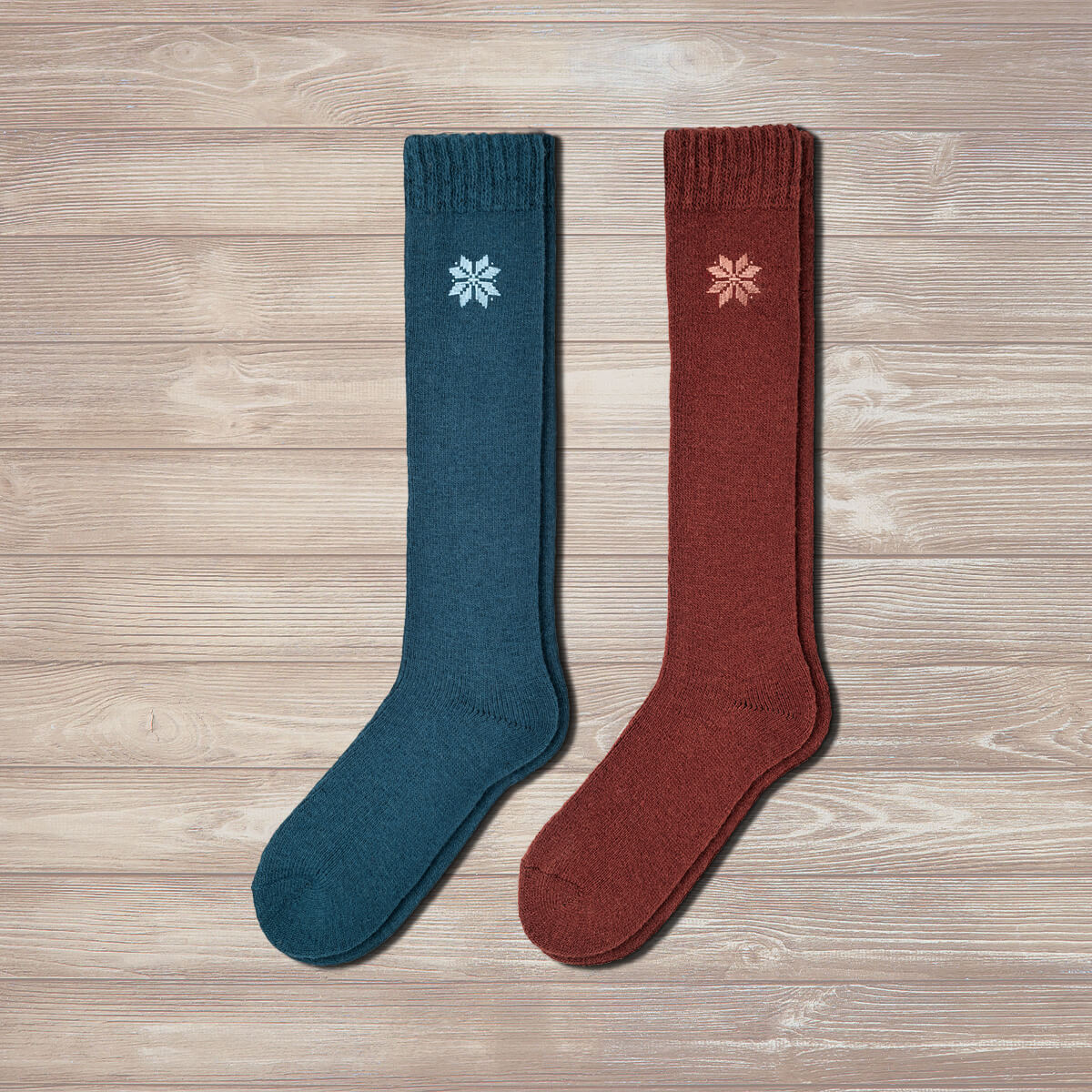Your Cart is Empty

How to Choose the Best Winter Socks for Kids
7 min read
When it comes to ensuring the well-being and comfort of your children during the winter months, finding the appropriate material for their socks is of paramount importance. Kids are more susceptible to the cold, making it crucial to select the right materials for their socks. The proper choice can make a world of difference in keeping their little feet dry and toasty throughout the chilly season. In this article, we'll delve into the world of kids socks, exploring various features, materials, and options to help you make the best decision.
Benefits of wearing proper socks

Temperature Regulation
Winter kids socks play a pivotal role in maintaining the right temperature for your child's feet. It's essential to provide adequate insulation to keep their feet comfy in cold weather. Conversely, in milder winter conditions, socks should allow for breathability to prevent overheating. The right material helps strike this delicate balance, ensuring that your child's feet stay at a comfortable temperature.
Preventing Frostbite and Cold-Related Problems
Cold feet are more than just uncomfortable; they can lead to serious health issues, including frostbite and frostnip. Frostbite occurs when skin and underlying tissues freeze, resulting in tissue damage and long-term complications. Proper warm socks offer protection against these cold-related problems.
Moisture Management
Sweating inside winter boots can be a common problem, even in cold temperatures. Moisture-wicking materials, such as merino wool, help draw moisture away from the skin, keeping feet dry and reducing the risk of frostbite or blisters caused by wet socks.
Health and Immunity
Cold extremities, such as cold feet, can contribute to a weakened immune system, making children more susceptible to illnesses during the winter. Insulated socks help maintain body warmth, which is crucial for overall health and well-being.
Avoiding Odor and Discomfort
Inadequate insulation or materials that trap moisture can lead to sweaty, smelly feet. Materials like merino wool often have natural antimicrobial properties that help reduce odor, keeping your child's feet fresh and comfortable.
Options for the best material for kids socks

When choosing the material for winter kids' socks, several options are available, each with its unique characteristics. Some of the most important materials to consider include:
Merino Wool: Natural Insulation
Merino wool comes from Merino sheep, which produces exceptionally fine and soft wool fibers. These fine fibers make kids socks incredibly comfortable to wear, even for extended periods.
One of the standout features of Merino wool is its excellent insulation properties. Despite its lightweight feel, Merino wool can trap air effectively, providing superior warmth. This natural insulation makes Merino wool socks an ideal choice for winter family activities or simply braving the cold outdoors.
Moreover,Merino wool has moisture-wicking properties, which means it can pull moisture away from the skin and keep feet dry. Wet feet are more susceptible to cold and discomfort, so this moisture-wicking ability is crucial for maintaining warmth and comfort in winter conditions.
These socks also excel in odor control. The fibers naturally inhibit the growth of odor-causing bacteria, ensuring your socks stay fresh, even during prolonged wear.
Full Terry/Heavyweight Socks: Thick and Cushioned
Another option for warm socks is heavyweight cotton or full terry socks. These socks are typically made from thick, densely woven cotton fibers, providing a cushioned and cozy feel. Full terry socks feature a looped pile on the inside, which enhances their insulation and comfort.
Heavyweight socks are excellent for kids who find wool uncomfortable or are allergic to it. These socks offer adequate warmth and insulation, making them suitable for moderately cold conditions.
One of the advantages of cotton socks is their breathability. They allow air circulation, preventing excessive sweating and moisture buildup. However, it's essential to note that cotton does not wick moisture away from the skin as effectively as Merino wool. So, while these socks are suitable for mild winter days, they may not be the best choice for extremely cold or wet conditions.
Considerations when choosing between Merino wool and cotton
When deciding between Merino socks and heavyweight kids socks for your children during the winter months, several essential considerations come into play. Each type of sock has its unique characteristics and benefits, making the choice dependent on your child's specific needs and activities:
Insulation and Warmth
Merino Wool: These socks are renowned for their exceptional insulation properties. They provide superior warmth and retain heat efficiently, even when wet. These socks are excellent for extremely cold weather or activities that expose kids to snow and icy conditions.
Heavyweight Cotton: Heavyweight socks also offer good insulation but may be less effective than Merino wool in icy and wet conditions. They are suitable for moderately cold climates and less intense winter activities.
Moisture Management
Merino Wool: This material excels in moisture-wicking. It can absorb significant moisture (sweat) without feeling wet, keeping your child's feet dry and comfortable. This feature is especially beneficial in preventing cold feet and potential frostbite.
Heavyweight Cotton: These socks, while breathable, do not wick moisture as effectively as Merino wool. If your child tends to have sweaty feet or will engage in active winter sports, the latter is the better choice to manage moisture.
Durability
Merino Wool: The socks made from this material are typically less durable than heavyweight socks. They require more delicate care and may wear out more quickly, particularly if subjected to frequent washing or rough play.
Heavyweight Cotton: Heavyweight socks are known for their durability and can withstand the rigors of active play. They are a practical choice if your child tends to be rough on their clothing.
Comfort and Itchiness
Merino Wool: This fabric is known for its softness and is generally less itchy than regular wool. It's comfortable against the skin, making it suitable for kids who are sensitive to textures.
Heavyweight Cotton: These socks are also comfortable but may not provide the same level of softness and itch resistance as Merino wool.
Activity Level
Merino Wool: If your child is involved in outdoor winter activities like skiing, snowboarding, or hiking, Merino wool socks are an excellent choice due to their moisture-wicking and warmth-retaining properties.
Heavyweight Cotton: For less active winter days and everyday wear, heavyweight socks can provide adequate warmth and comfort without the need for the extra features of Merino wool.
Care and Maintenance
Merino Wool: The socks from this fabric typically require more delicate care, including hand washing or using a gentle machine cycle.
Heavyweight Cotton: Heavyweight socks are easier to care for and can withstand regular machine washing and drying.
Factors to Consider When Choosing Warm Socks
Kids' Age and Activity Level
Consider the age of your child and their activity level. Younger kids may require extra warmth and cushioning, while older, more active kids may benefit from moisture-wicking properties and durability.
Sock Thickness and Insulation Requirements
Determine the thickness and insulation needed based on the winter climate in your region. Colder regions may require thicker, warmer socks.
Proper Sizing and Fit for Comfort
Ensure that the socks fit properly and provide ample room for growing feet. Avoid socks that are too tight, as they can restrict circulation and cause discomfort.
Best sock brand for kids
Our premium Nordic-inspired kids' socks are perfect for both boys and girls, offering the utmost in quality and comfort. Designed with your little one's comfort in mind, these wool kids socks are tailored to provide continuous warmth and snugness, making them the ideal choice for the cold. Whether it's a snowy outdoor adventure or a cozy day indoors,Nordic Socks keeps your child's feet snug, ensuring they enjoy every winter moment to the fullest.
Conclusion

When the winter sets in, keep in mind that there's no such thing as unfavorable weather, only inadequate clothing choices. It's advisable to layer up and ensure your children wear waterproof clothing when they venture outdoors in winter.
Now, let's not forget the importance of proper hiking socks in your child's outdoor adventures. Just as layers and waterproof clothing are crucial, having the right socks can make all the difference in keeping your toddler's feet dry and comfortable during winter playtime.
Frequently Asked Questions
How do you warm up kid's feet?
To warm up kids' feet, start by removing any wet socks and shoes and drying their feet thoroughly. Place them in warm, dry socks made from Merino wool or heavyweight cotton materials. Encourage movement to increase blood flow to the feet, like wiggling toes or gentle foot massages. A warm drink can also help raise their body temperature, indirectly warming their feet. If needed, use warm blankets or heated pads near their feet, ensuring they are not too hot to avoid burns. Finally, ensure they're wearing insulated footwear and proper winter attire when heading outside to prevent cold feet.
Should I put socks on a baby with cold feet?
Yes, it's a good idea to put socks on a baby or toddler with cold feet. Babies have delicate and sensitive skin, and keeping their feet warm is essential for their comfort and well-being. When a baby's feet feel cold, it can make them uncomfortable and may even disrupt their sleep. Ensure the socks are not too tight to allow proper circulation. Additionally, dress your baby in appropriate layers to maintain their overall body warmth during colder weather.
Should kids sleep with socks on?
Whether kids should sleep with socks on depends on their comfort and the room temperature. Socks can keep their feet warm during colder nights, potentially promoting better sleep. However, some children may find socks uncomfortable or may have sensory sensitivities, preferring to sleep without them. Parents should consider their child's comfort and individual preferences. If socks improve sleep quality and comfort, letting kids sleep with them on is perfectly fine. Ensure the socks are clean, well-fitting, and not too tight to avoid any discomfort or circulation issues. Ultimately, the decision should prioritize the child's comfort and sleep needs.
Get Exclusive offers
Join our email list and get exclusive offers and 10% off on first order.
Recent Articles
-
 What are the best cotton socks? February 18, 2025
What are the best cotton socks? February 18, 2025 -
 The Cultural Inspiration Behind Our Sock Designs December 03, 2024
The Cultural Inspiration Behind Our Sock Designs December 03, 2024 -
 What Should You Look For When Buying Hiking Socks? November 12, 2024
What Should You Look For When Buying Hiking Socks? November 12, 2024 -
 Guide to Keeping Your Feet Toasty: The Best Socks for Cold Weather October 22, 2024
Guide to Keeping Your Feet Toasty: The Best Socks for Cold Weather October 22, 2024 -
 Gear Up for Adventure: Wool Hiking Socks for Your Next Trek October 22, 2024
Gear Up for Adventure: Wool Hiking Socks for Your Next Trek October 22, 2024
Related Products
Enjoying this content?
Sign up to get notification about new articles, special offers and new products.
Knee High Socks
NEWS & UPDATES
Get the newsletter to receive direct information about offers and new products.
Where are we shipping to?
Purchase from your country’s website.
It’s the fastest way to pamper your feet with comfy socks.
other countries
English






